Revisiting a home’s eighties roots offers a unique chance to blend nostalgia with forward-thinking style. After years spent on beige autopilot, many 1980s house exteriors are hiding sharp geometry, playful color, and indoor-outdoor energy just waiting to shine again. Armed with durable modern materials, low-wattage LEDs, and fresh approaches to pattern, you can coax that spirit back without falling into caricature. From Memphis-inspired paint blocks to sleek PV panels, the right moves celebrate the period’s optimism while meeting today’s performance standards. Ready for fresh curb appeal? Let’s dive into twenty-five ideas that make the decade feel brand-new.
1. Geometric Paint Blocks for a 1980s House Exterior
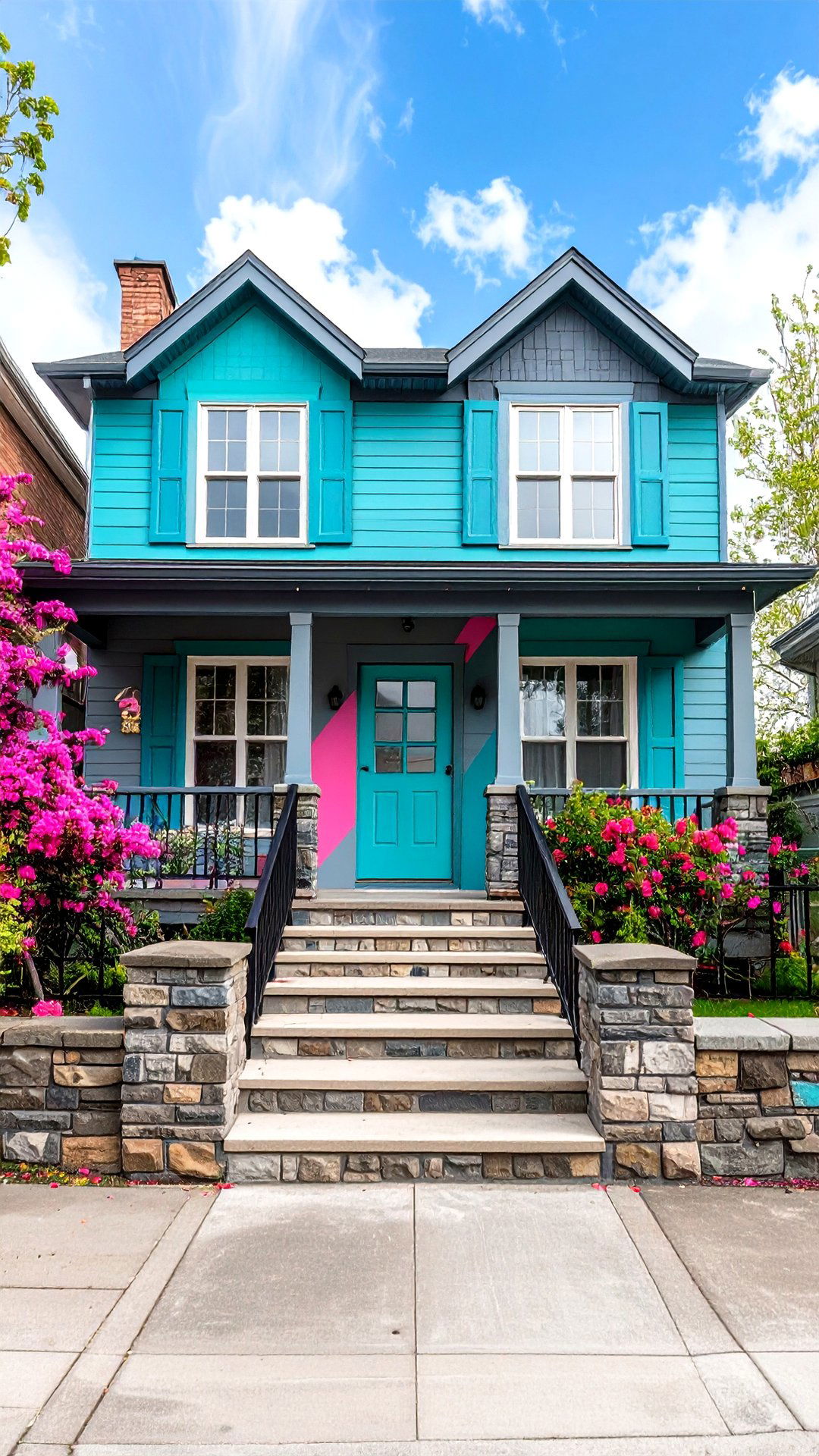
A splash of punchy geometric paint blocks instantly channels 1980s house exterior drama. Instead of settling for one safe color, choose two mid-tone neutrals — say charcoal and dove gray — and overlay a jagged diagonal of aqua or magenta across a prominent wall or chimney. The high-contrast motif nods to the Memphis design movement that defined many late-’80s interiors, yet it translates outdoors with masonry-safe acrylics. Mask crisp lines with painter’s tape, seal edges, then roll on color in wide swaths for a modern mural effect. The resulting façade feels playful, architecturally bold, and unmistakably eighties.
2. Fiber-Cement Siding Upgrade for Your 1980s House Exterior
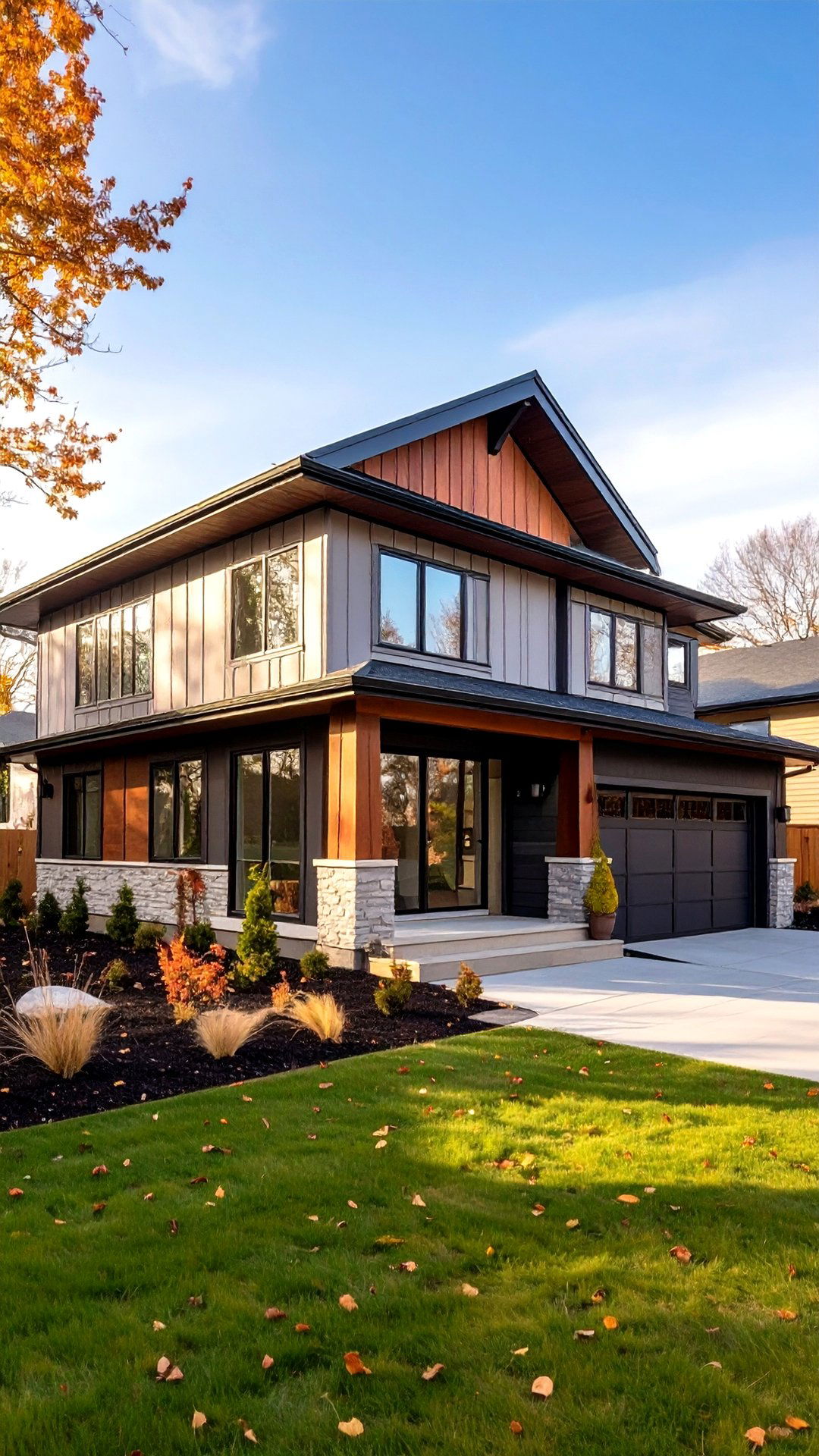
Consider swapping tired aluminum panels for fresh fiber-cement siding to future-proof your 1980s house exterior. Fiber-cement boards mimic the crisp shadow lines of the period’s vertical cedar planks while adding termite resistance, Class A fire rating, and decades of easy maintenance. Because the planks come pre-primed, you can finish them in either a period-appropriate warm taupe or a trend-forward matte black without extra prep. Contractors fasten the boards over a rain-screen gap, improving ventilation and energy performance. This single upgrade balances nostalgia with performance, giving your façade a low-gloss, architect-grade skin that holds color far longer than wood.
3. Mixed Horizontal–Vertical Cladding Adds Rhythm to a 1980s House Exterior
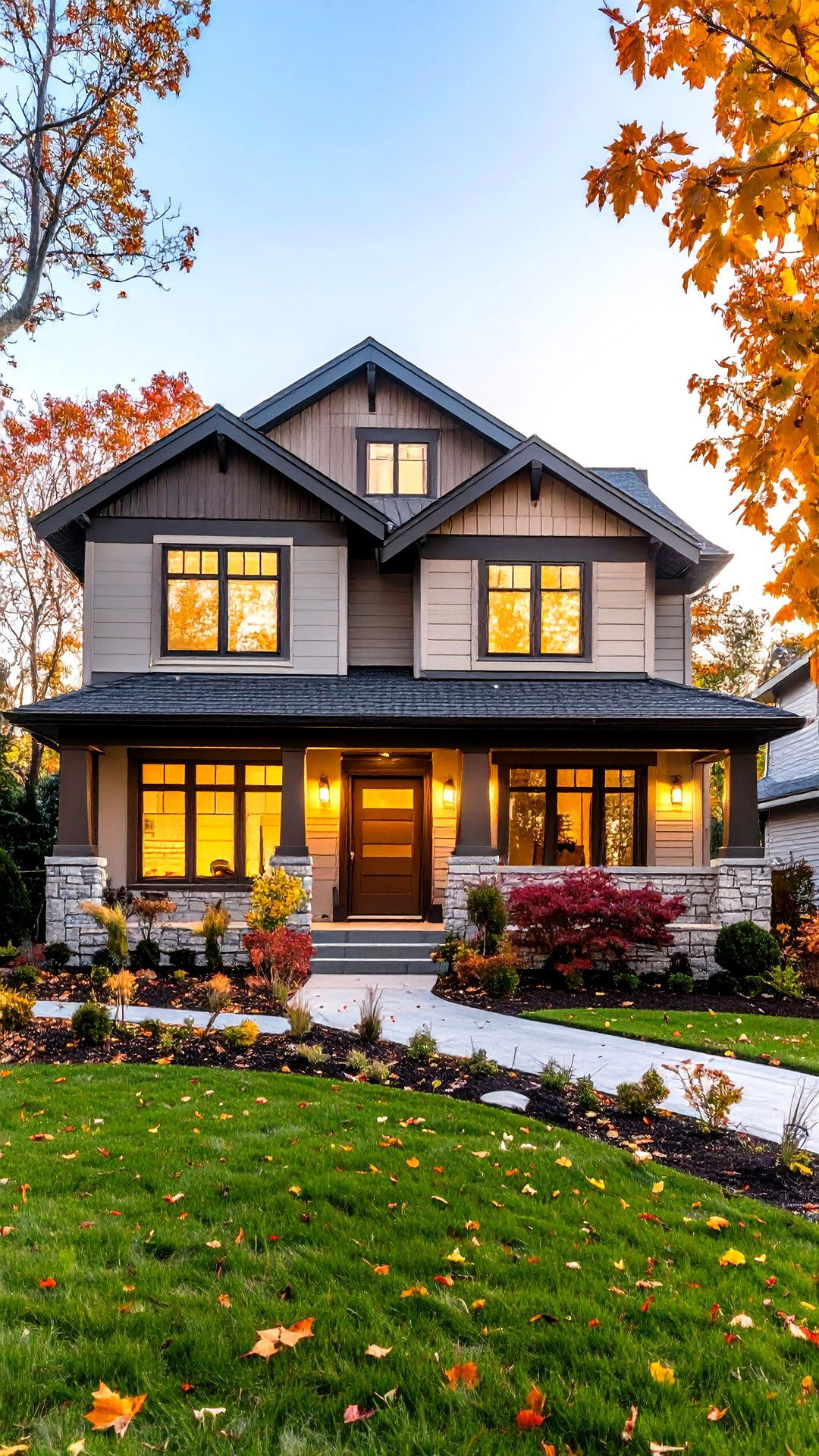
Another simple way to inject period authenticity is by alternating bands of horizontal clapboard and vertical board-and-batten across your 1980s house exterior. The directional switch echoes the era’s fascination with graphic stripes while disguising awkward wall proportions. Use contrasting yet harmonious paint — perhaps pewter on the horizontal runs and pale almond on the vertical — to accentuate the textural rhythm. Pre-fitting battens on modular panels speeds installation and keeps seams tight. Finish the look with a slender shadow-gap trim instead of bulky corner boards, letting the siding pattern take center stage. This dynamic surface treatment instantly signals an eighties inspiration without feeling dated.
4. Limewashed Brick Softens a 1980s House Exterior
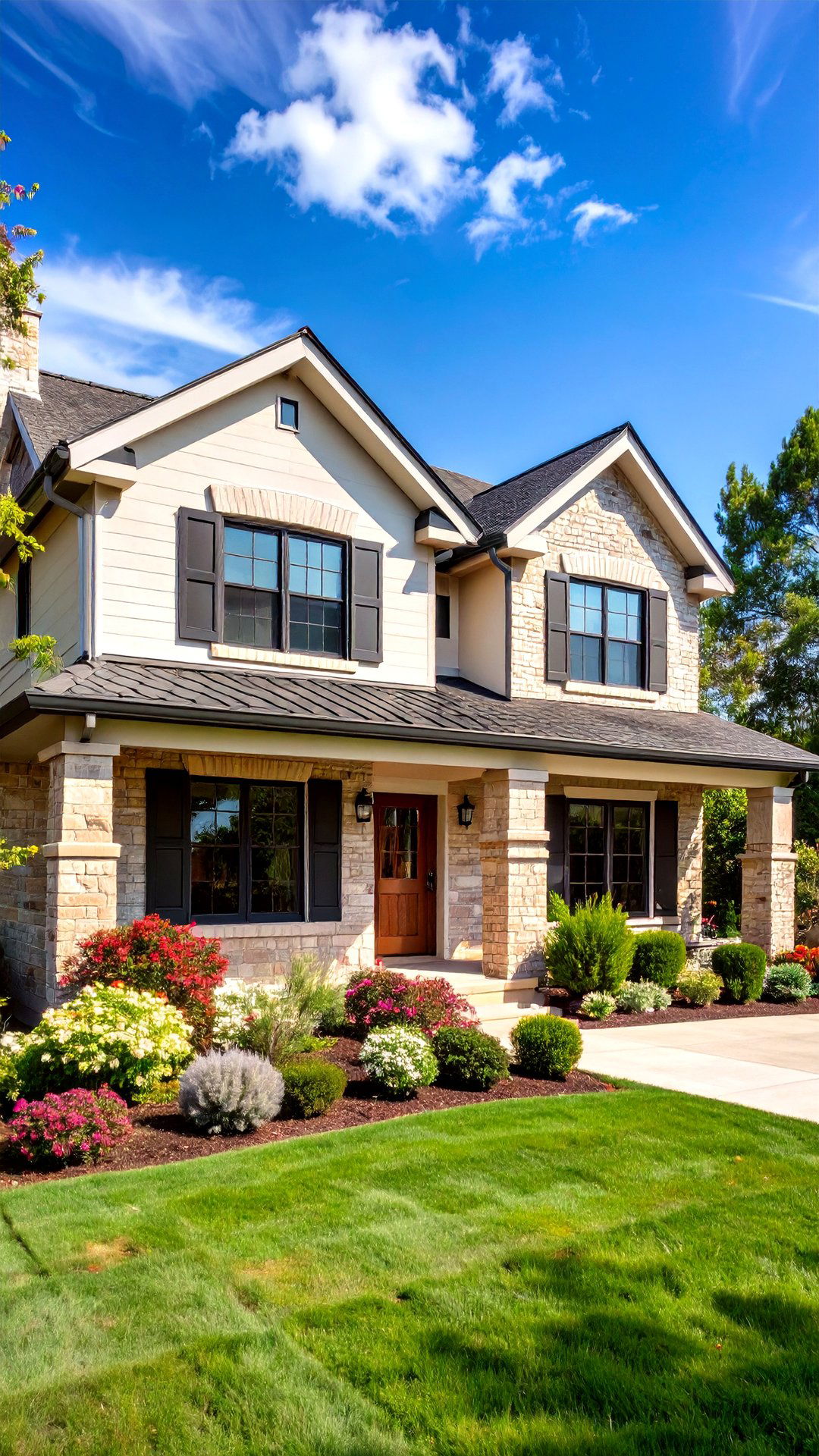
Limewashing dated orange brick can soften a 1980s house exterior without erasing its sturdy character. The thin mineral coating penetrates masonry, so the brick’s irregular pitting shows through a velvety veil of off-white. Unlike opaque latex paint, limewash gradually patinas, yielding a sun-bleached, Mediterranean vibe that still hints at the bold brick palette popular during the eighties. Prep by cleaning efflorescence and misting walls for absorption; then brush on two diluted coats for depth. Because lime is naturally alkaline, it resists mold and insects, adding durability with charm. Pair the refreshed brick with black window trim for clean contrast.
5. Standing-Seam Metal Roof Elevates a 1980s House Exterior

Surprisingly sleek, a standing-seam metal roof can reinforce the angular silhouette of a 1980s house exterior while boosting efficiency. The continuous vertical ribs mirror the strong linear gestures common to split-level and contemporary-box models of the era, yet the factory-coated steel sheds heat far better than aging asphalt. Opt for a matte charcoal or even retro patinaed copper to complement brick, stucco, or cedar below. Because panels lock together without exposed fasteners, leaks are rare and wind resistance climbs above 140 mph. Add color-matched snow guards in cooler climates to protect gutters, and enjoy a roof rated to last half a century.
6. High-Saturation Door Color Pops on a 1980s House Exterior
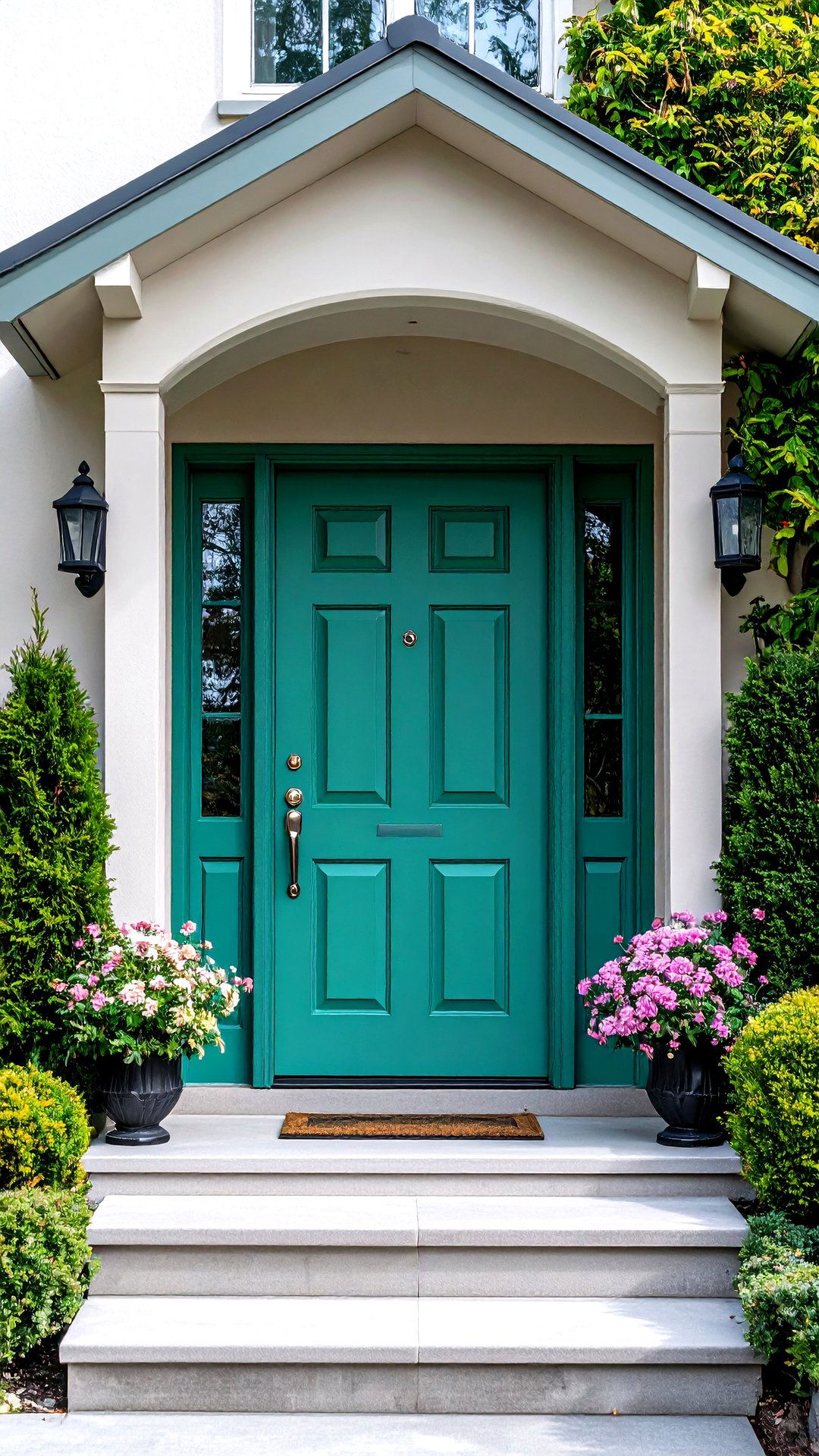
To create an unforgettable greeting, paint the front door of your 1980s house exterior a joyful, high-saturation hue. Mint, tangerine, or electric blue immediately telegraph eighties optimism against more restrained wall colors. Prep by removing aging storm doors, sanding lightly, and priming with bonding primer so new pigments pop. Satin exterior enamel resists UV fade and cleans easily after muddy splash-ups. Complement the door with a slimline brushed-chrome handle set and a matching knocker to keep the palette crisp. The punch of color costs little, installs in an afternoon, and offers maximum curb-appeal payoff year-round.
7. Glass-Block Sidelights Refresh a 1980s House Exterior
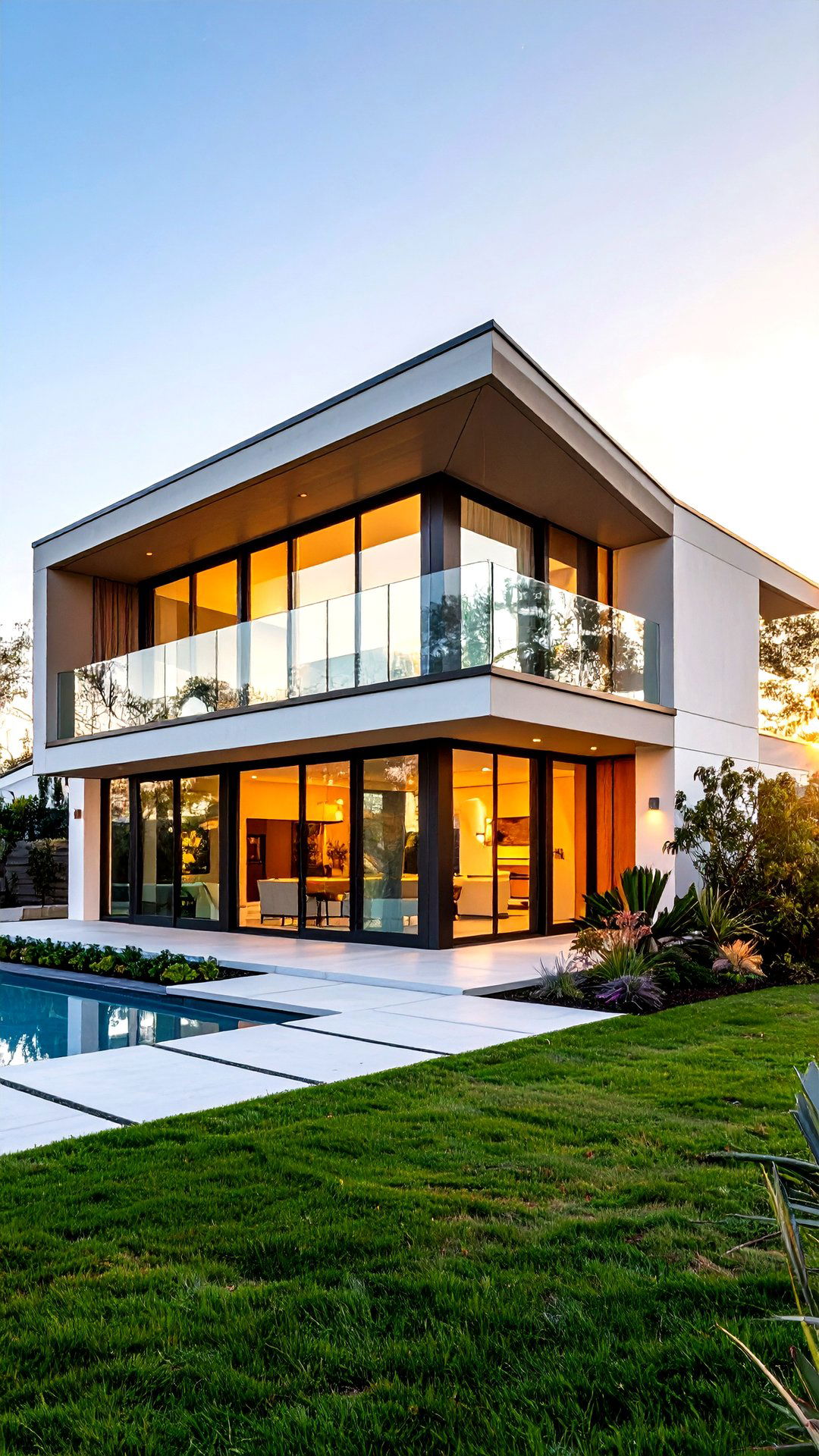
Glass-block sidelights evoke the futuristic sparkle many original 1980s house exteriors flaunted. Swapping a narrow wooden window for a two-by-six grid of translucent blocks filters daylight into entry halls while preserving privacy. Today’s units carry insulated cores and clear silicone joints, so they outperform the drafty mortar-set blocks of decades past. Use a frosted or wavy texture to cast playful shadows on interior walls reminiscent of old VHS static. Because blocks come in modular panels, a competent DIYer can retrofit them within a weekend using vinyl nailing flanges, expanding foam, and trim caulk. The result gleams like a ruby-lit arcade screen.
8. Wrap-Around Deck & Cable Rail Expand a 1980s House Exterior
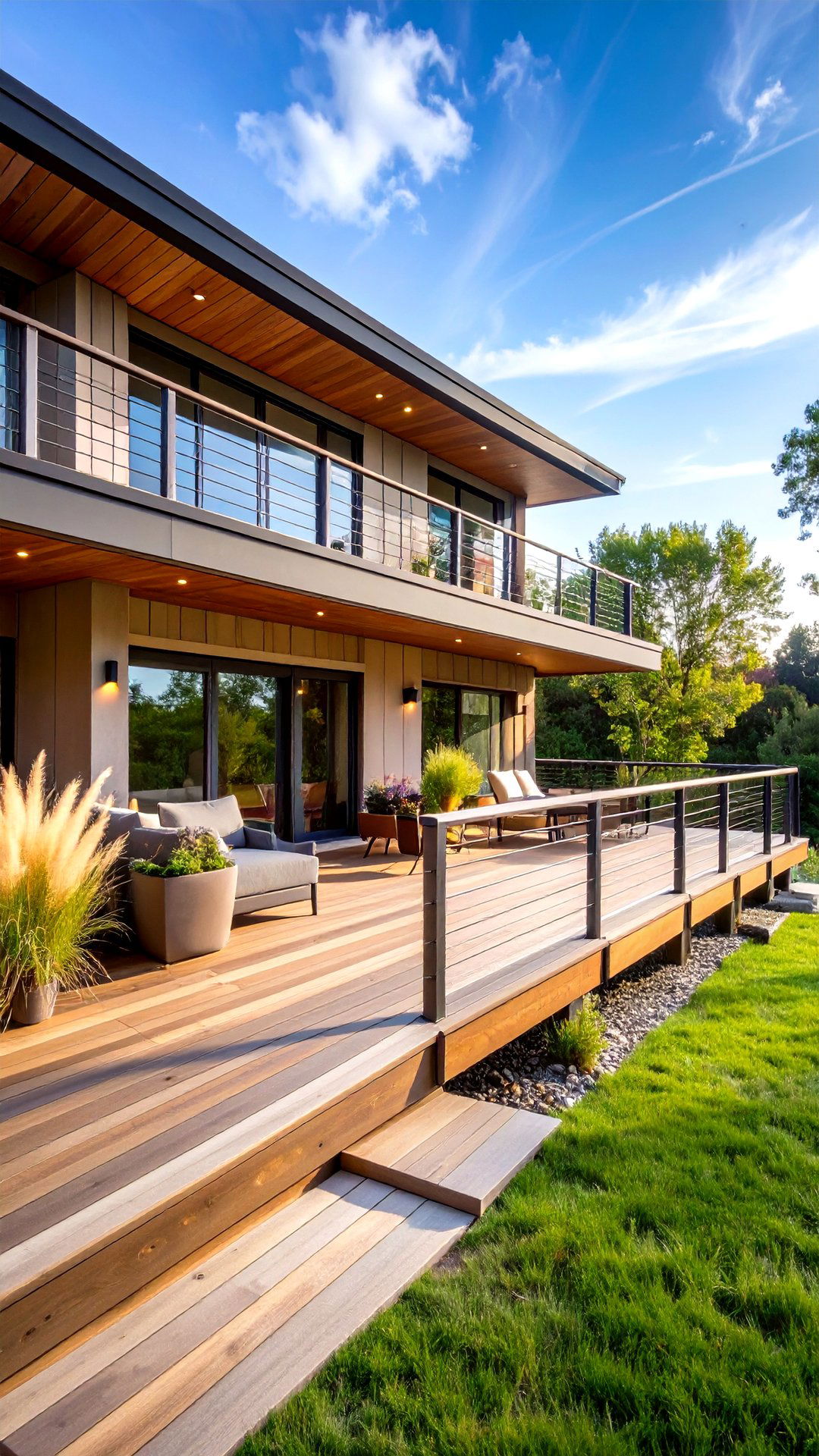
Bringing back a low-profile wrap-around deck reinvigorates the indoor-outdoor ethos of a 1980s house exterior. Use pressure-treated framing topped with composite boards in a warm driftwood tone that nods to era-favorite gray stains but lasts decades longer. Slim stainless-steel cable rails keep sightlines open, accentuating the home’s sharp rooflines and giving evening partygoers unobstructed views. Where grade allows, flush-mount LED tread lights add an amber glow reminiscent of neon underlighting. Anchor the platform with L-shaped planters containing hardy ornamental grasses; their feathery plumes sway like the feathered hair of eighties icons. This upgrade doubles entertaining space without structural overhauls.
9. Smooth Stucco Reskin Modernizes a 1980s House Exterior

Unlike coarse popcorn textures, a sleek, re-skimmed stucco coat instantly modernizes a 1980s house exterior. Contractors trowel a thin layer of polymer-modified cement over existing roughcast, then float it smooth, highlighting the home’s best chamfers and parapets. Because color pigments integrate into the mix, a soft bone or pale peach never peels, slashing maintenance. Expand control joints at window heads to prevent cracking and give the façade a tidy, architectural grid. Finally, treat the fresh stucco with siloxane water-repellent for stain resistance. The subtle sheen brings back that sun-washed California vibe many eighties subdivisions tried to emulate.
10. Bronze-Framed Casements Sharpen a 1980s House Exterior
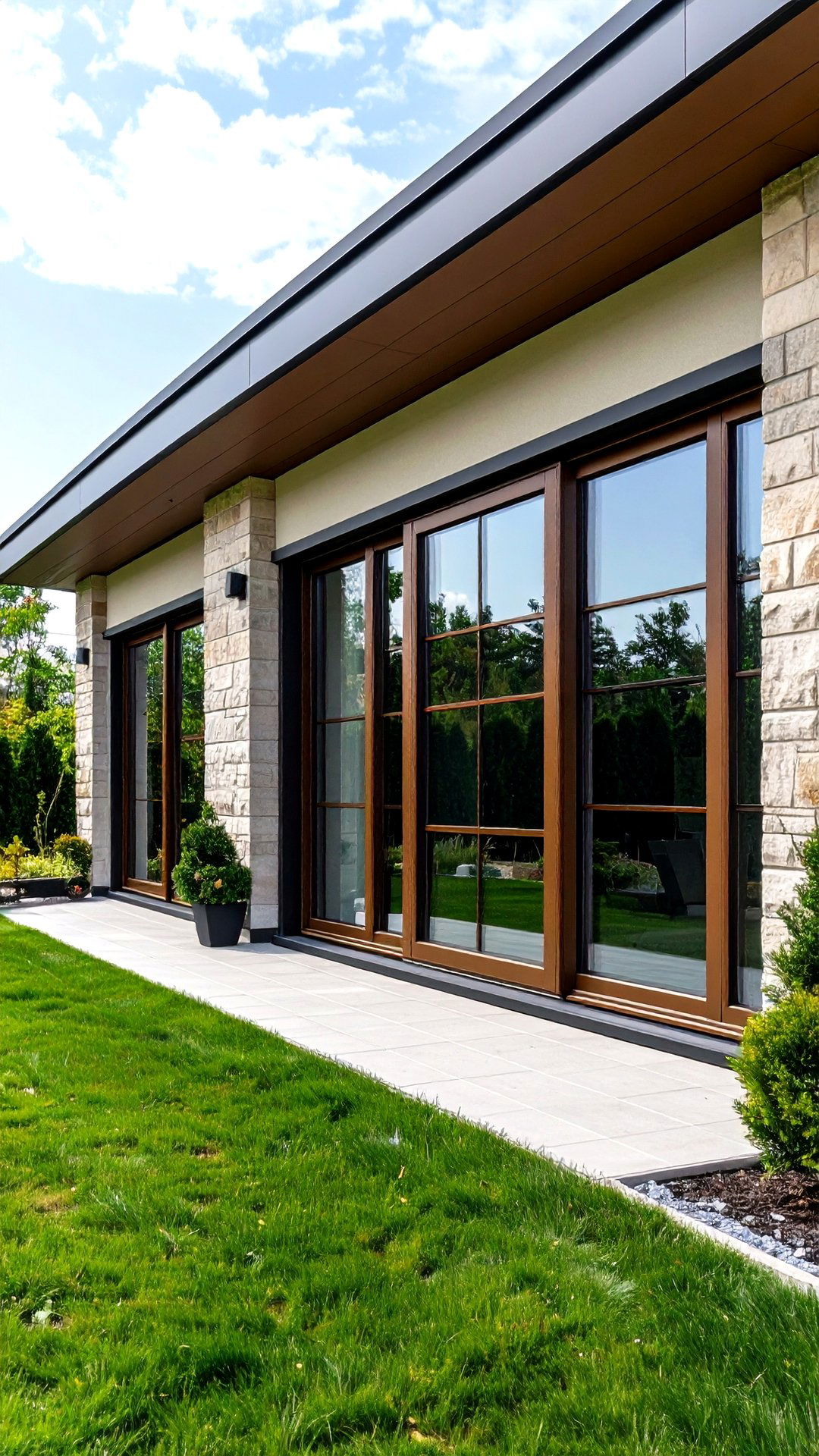
Swapping fogged sliders for bronze-framed casement windows amplifies the high-tech edge of a 1980s house exterior. Slim thermally broken aluminum profiles echo the dark anodized frames that proliferated after 1983 but add today’s low-E glass and argon fills for serious efficiency. Group the units into two-story vertical stacks to emphasize height, or create a horizontal ribbon beneath broad eaves to showcase the period’s linear obsessions. Factory tint the glazing in a subtle smoke gray to reduce glare and accentuate metalwork. With concealed hinges and multi-point locks, the new windows operate smoothly, seal tightly, and restore crisp geometry lost to age.
11. Post-Modern Entry Awning for a 1980s House Exterior

Adding a bold post-modern entry awning delivers the theatrical flair so many 1980s house exteriors originally chased. Fabricate a chunky triangular canopy from powder-coated steel, then finish the underside in a contrasting pastel — think mauve or seafoam — to echo era-loving laminates. Mount the piece on stout, offset columns to create a dramatic sense of arrival and provide shelter from summer showers. Integrated LED strip lighting hidden along the awning’s rear edge washes color down night-time walls much like neon signage once did. This geometric marquee instantly says “welcome” while giving the façade a sculptural centerpiece that isn’t afraid of personality.
12. Pyramid Skylights Brighten a 1980s House Exterior
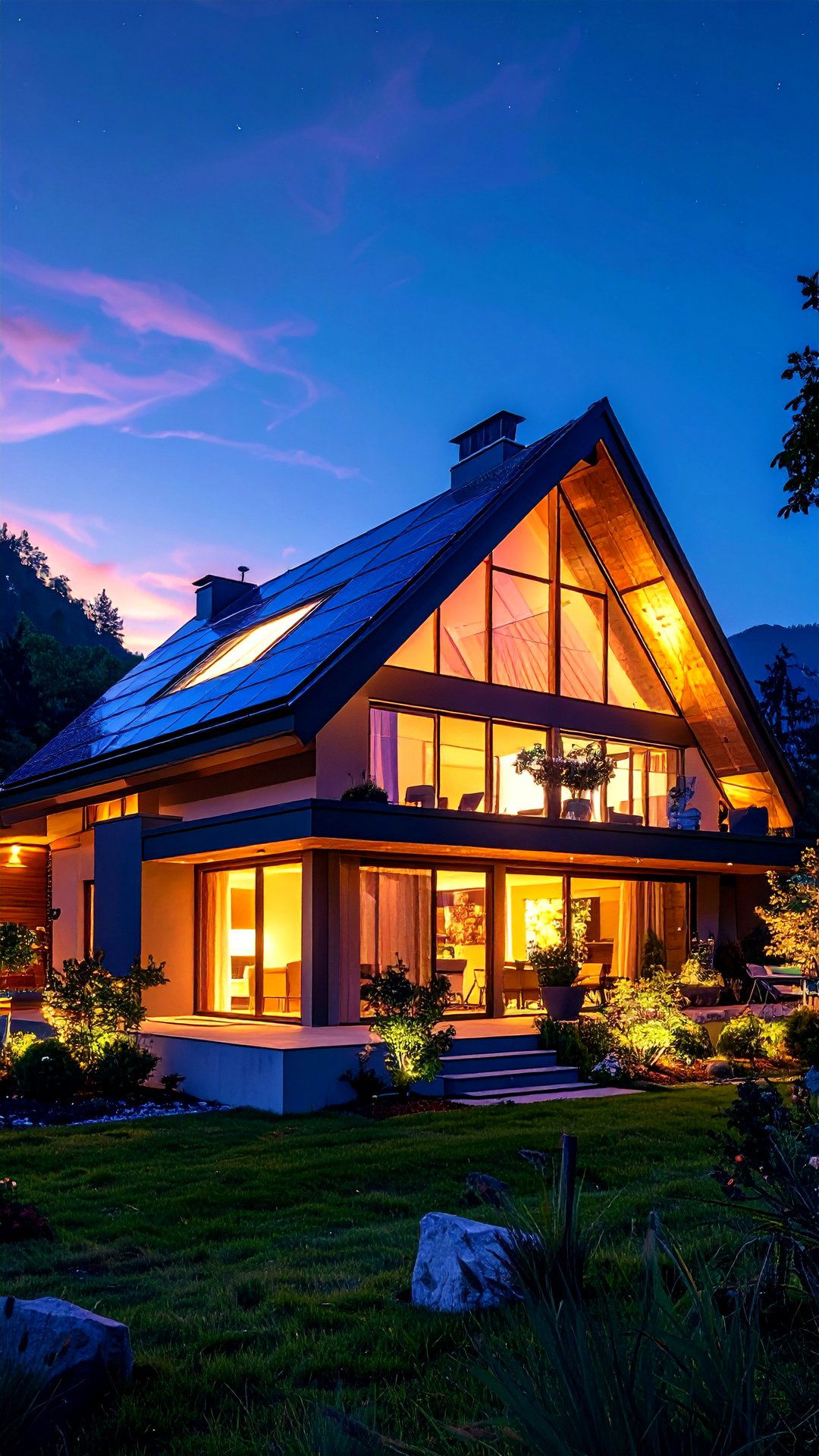
Installing a row of pyramid skylights brings the upward-looking optimism of a 1980s house exterior into the twenty-first century. Where roof pitches intersect, cut in two-by-four-foot acrylic domes with solar-powered blinds that glide shut on scorching afternoons. The faceted lens recalls the glass-block chandeliers popular inside eighties foyers, yet modern glazing units boast hail-resistant polycarbonate and low-E coatings. Position skylights over stairwells or vaulted living rooms to flood interiors with ambient daylight and reduce electric-lighting loads. At night, warm LED rope lighting tucked around the curb creates a glowing lantern effect, visually lifting the roofline without adding mass.
13. Chevron Cedar Accents Energize a 1980s House Exterior
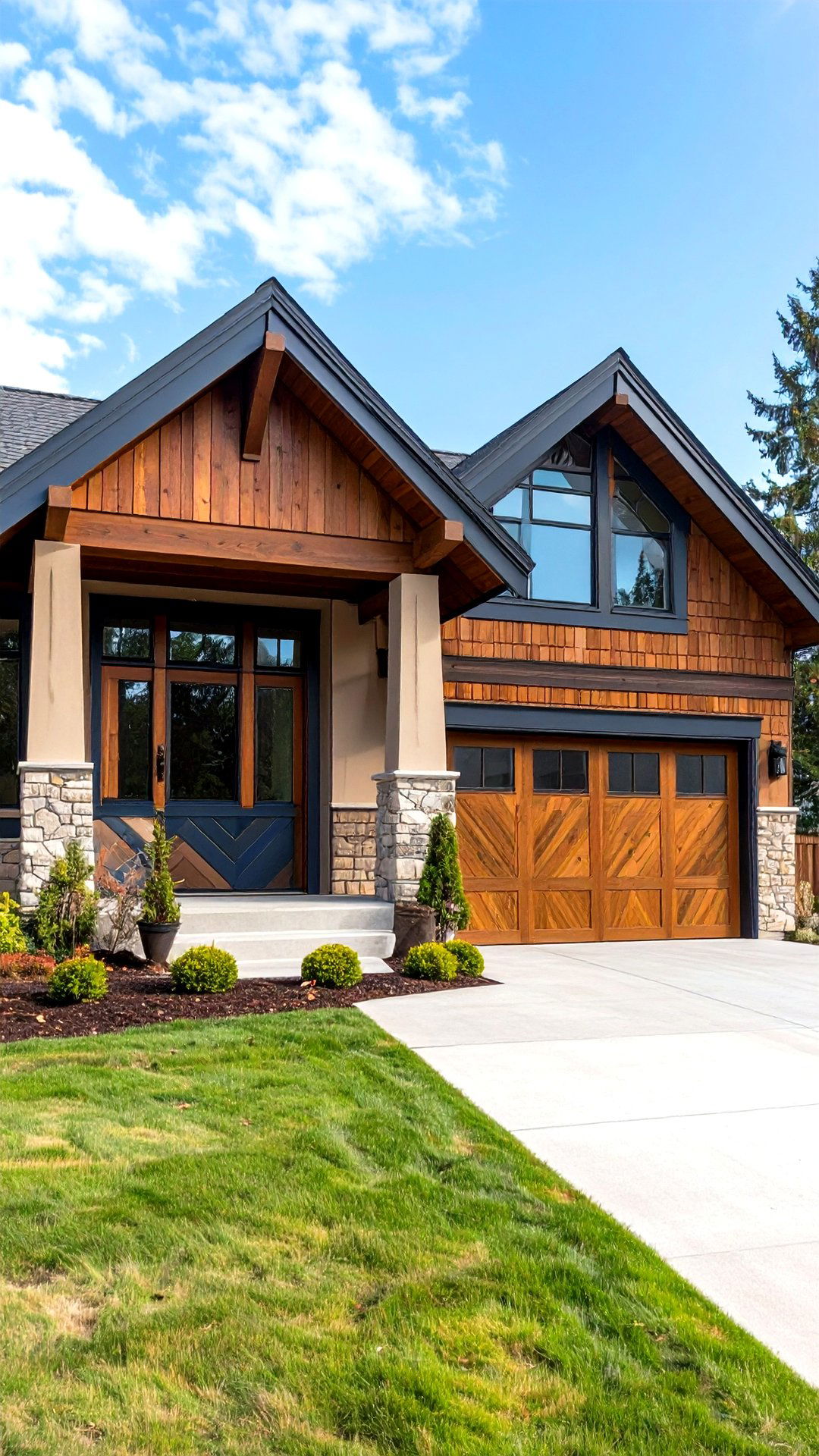
Chevron cedar accent panels inject kinetic energy into a flat 1980s house exterior. Start by framing a four-foot-tall band beneath second-story windows, then install one-by-four boards diagonally from center outward to form twin arrows that meet at a crisp V. Stain the panels in a semi-transparent cocoa hue that contrasts subtle stucco, or go bold with midnight blue for graphic punch. The zigzag pattern echoes eighties ski-jacket graphics and draws eyes along the façade, making narrow homes feel wider. Seal boards with UV oil every two years to maintain luster and prevent graying.
14. Cedar Pergola Carport Upgrades a 1980s House Exterior
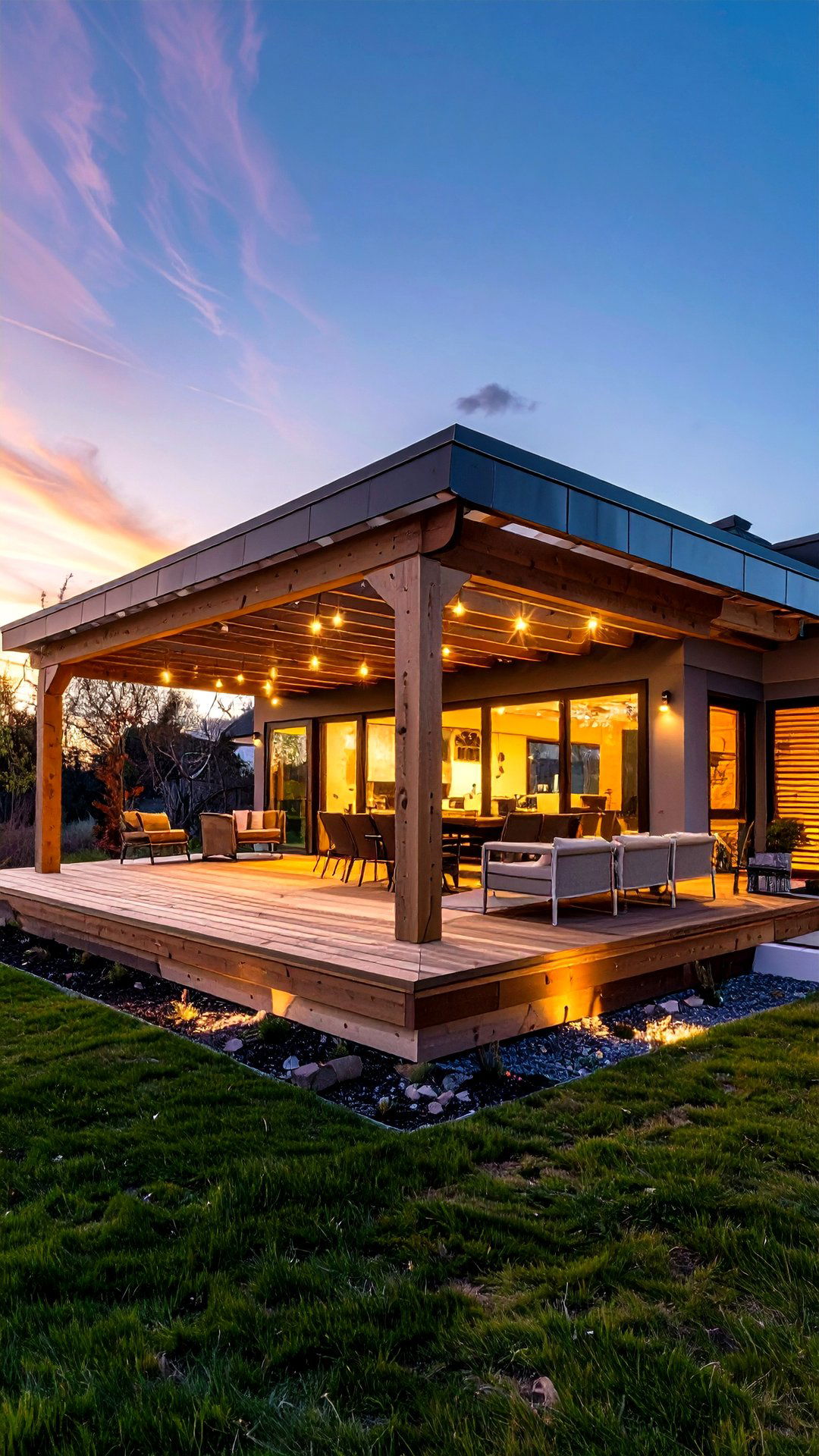
Constructing a light-filled cedar pergola over the existing carport elevates a 1980s house exterior from ordinary to resort-like. The open lattice catches sun in geometric bands that mirror the decade’s striped motifs, while leaving airflow unobstructed for cooling parked vehicles. Use six-by-six posts anchored in steel saddles, and finish beams with a warm water-based stain to resist UV. Integrate polycarbonate skylight strips atop alternating bays so rain stays out but natural light streams through. At night, string Edison-style LED bulbs along the rafters for a cozy glow reminiscent of poolside patios popular in sun-belt developments of the era.
15. Curved Masonry Arch Softens a 1980s House Exterior

Introducing a softly curved masonry arch over the main entry tempers the hard angles typical of a 1980s house exterior. By cutting a gentle radius into the lintel, then laying soldier-course bricks above, you create a subtle post-modern wink to Mediterranean Revival influences that cropped up near decade’s end. Paint the arch creamy beige to highlight the shape against darker field walls, and install an oversize opal globe pendant beneath for vintage flavor. The combination of curve and light breaks up rigid rooflines, guiding visitors toward the door with an inviting gesture that feels both retro and freshly welcoming.
16. Flush-Panel Garage Door Updates a 1980s House Exterior
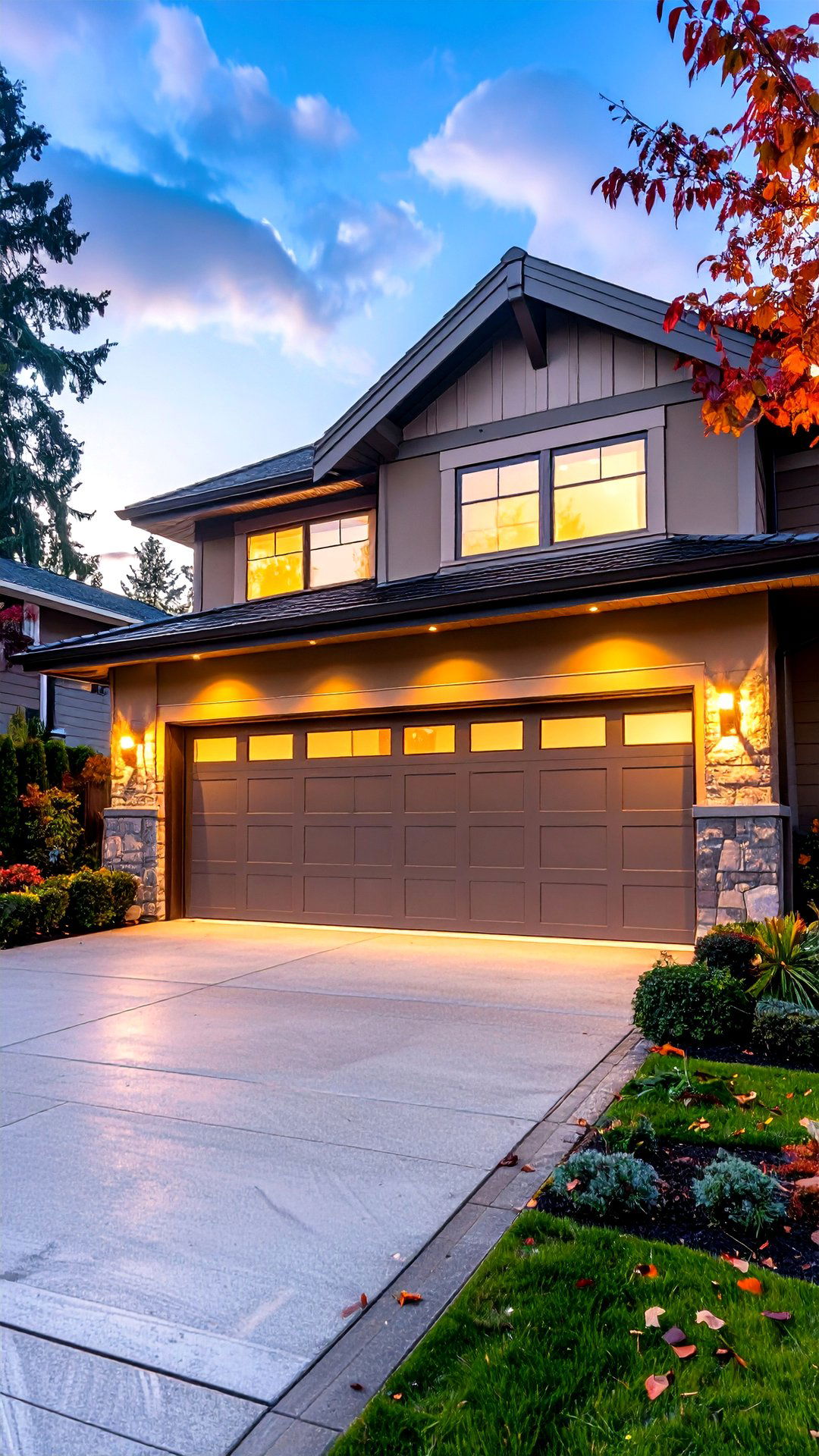
Upgrading to a flush-panel garage door instantly polishes the street view of a 1980s house exterior. Swap multi-pane stampings for a seamless composite slab with hidden hinges and frosted top-lite inserts. Order the skin in factory-finished matte taupe or deep graphite to complement modern siding, and choose polyurethane insulation to quiet rattles and improve thermal performance. Low-profile smart openers mount beside the tracks, freeing ceiling space and allowing you to illuminate the door with linear LEDs that glow whenever it moves. The result feels closer to a chic showroom façade than the clunky originals, boosting resale appeal immediately.
17. Oversized House Numbers Modernize a 1980s House Exterior
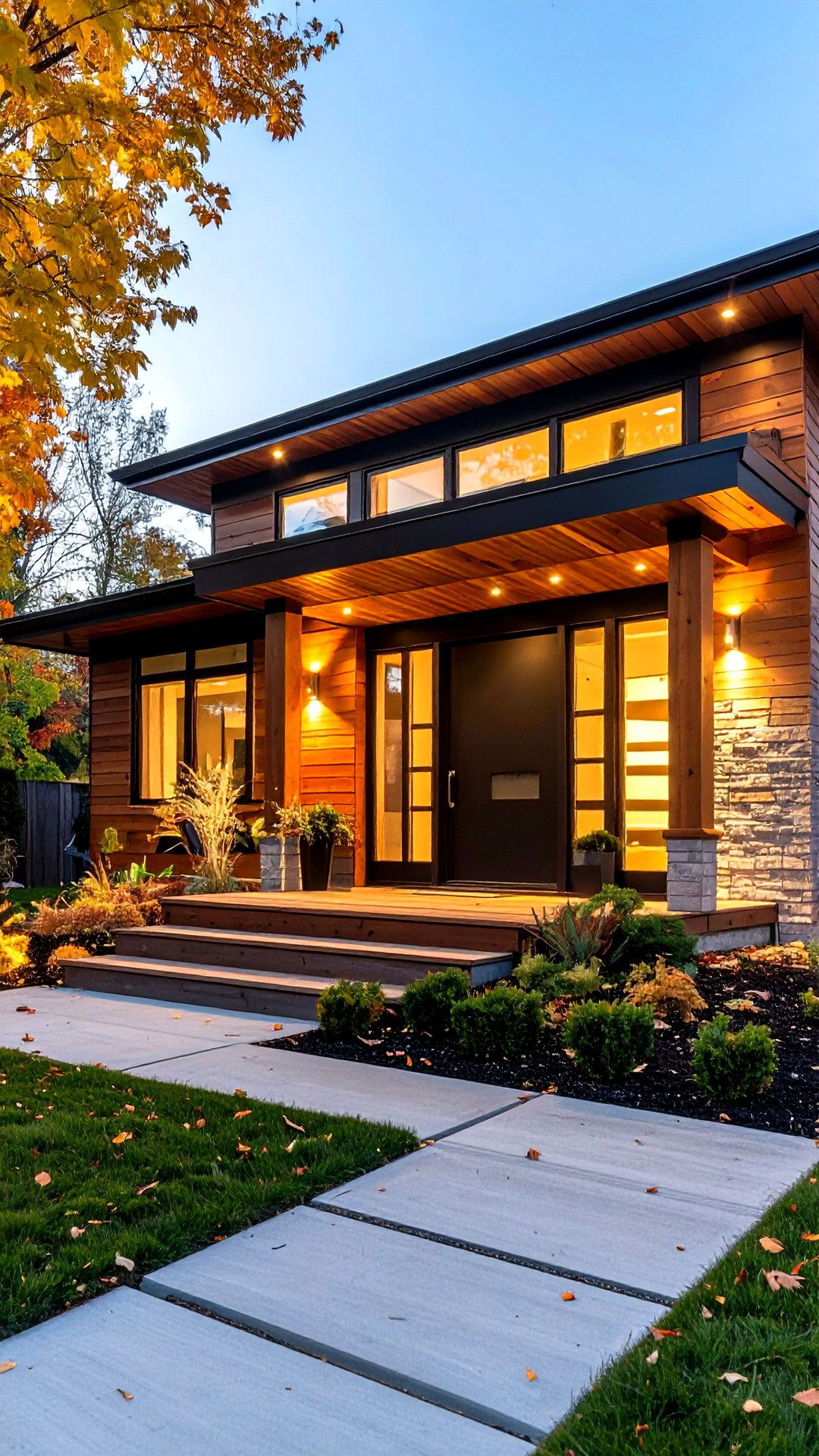
Take curb appeal up a notch by installing oversized, sans-serif house numbers on your 1980s house exterior. Laser-cut eight-inch aluminum numerals powder-coated in matte black or brushed chrome reinforce the decade’s love of bold typography. Offset-mount the digits one inch from the wall so sunlight throws dramatic shadows that shift throughout the day. For extra pop, backlight the assembly with low-voltage LEDs triggered by a dusk sensor — helpful for delivery drivers and undeniably cool. Placing the numbers on a vertical cedar plank, painted accent stripe, or even a glass-block column ties them to other upgrades and makes addresses legible from winding cul-de-sacs.
18. Cinematic Landscape Lighting Frames a 1980s House Exterior

Strategic landscape lighting turns a quiet 1980s house exterior into a cinematic nightscape. Start with low-voltage uplights washing the primary façade; warm 2700K LEDs grazing brick or stucco restore depth to the flat planes beloved in the era. Add color-changing smart spots directed at evergreen shrubs to riff on neon club signs without breaching ordinances. Path lights set in geometric intervals guide guests safely from sidewalk to front stoop, while discreet deck-mounted step lights underline new cedar rails. Because fixtures draw little power, they can tie into an existing transformer, and app controls let you adjust scenes for parties or quiet evenings.
19. Sunset-Stripe Fascia Colors a 1980s House Exterior
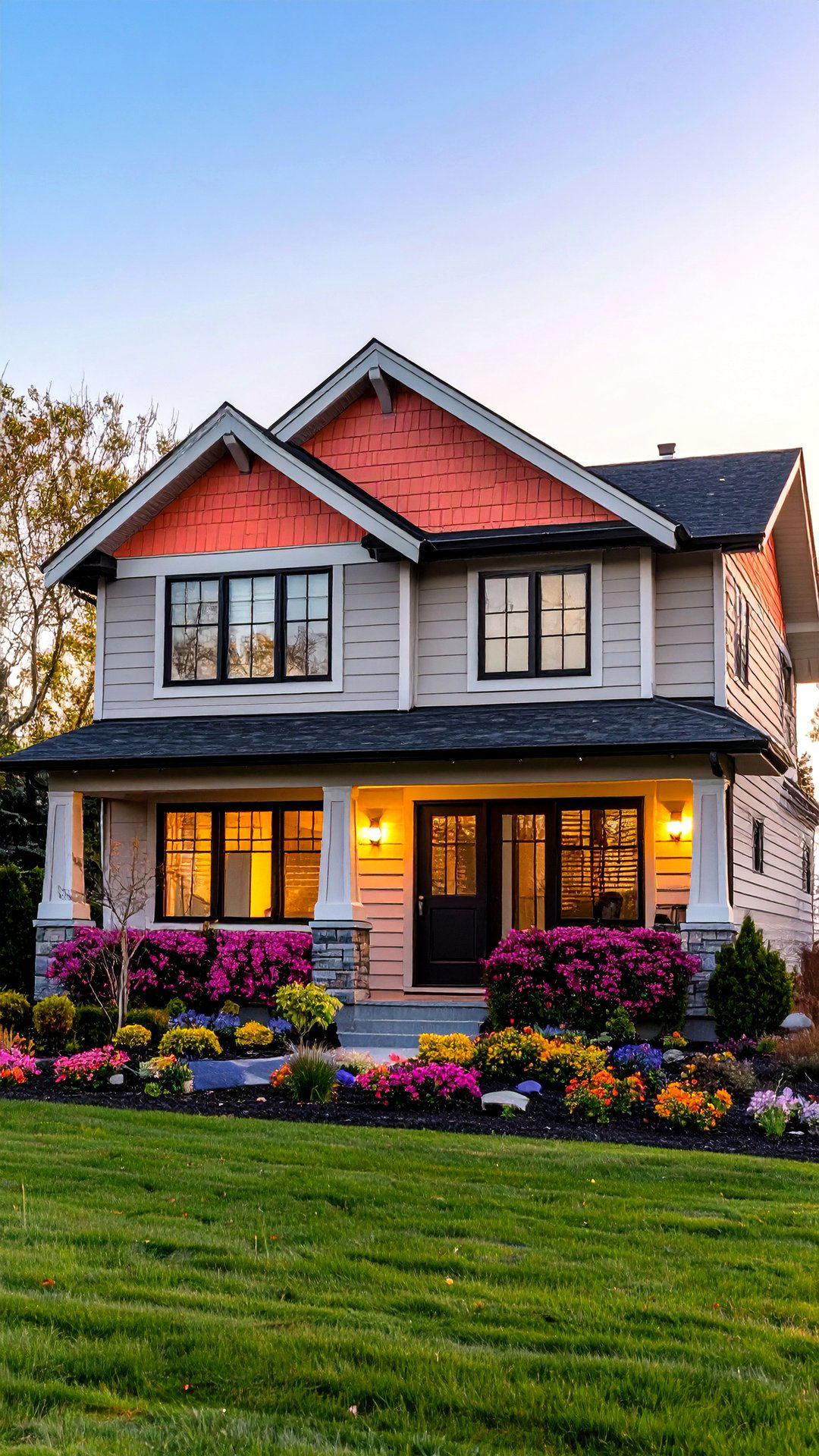
Painting a horizontal sunset-stripe fascia injects instant vibrancy into a subdued 1980s house exterior. Mask a 12-inch band along the eaves, then airbrush gradients of coral, peach, and lilac fading into one another to mimic the chrome hues on vintage Trapper Keeper binders. Use UV-stable exterior acrylics and a clear satin topcoat so colors stay sharp. Because the strip sits high, it reads like a continuous design accent without overwhelming ground-level materials. Pair the fascia with neutral siding and black windows to keep balance. The resulting pop of color feels playful yet controlled, announcing nostalgic confidence to the neighborhood.
20. Geometric Concrete Walkway Guides a 1980s House Exterior
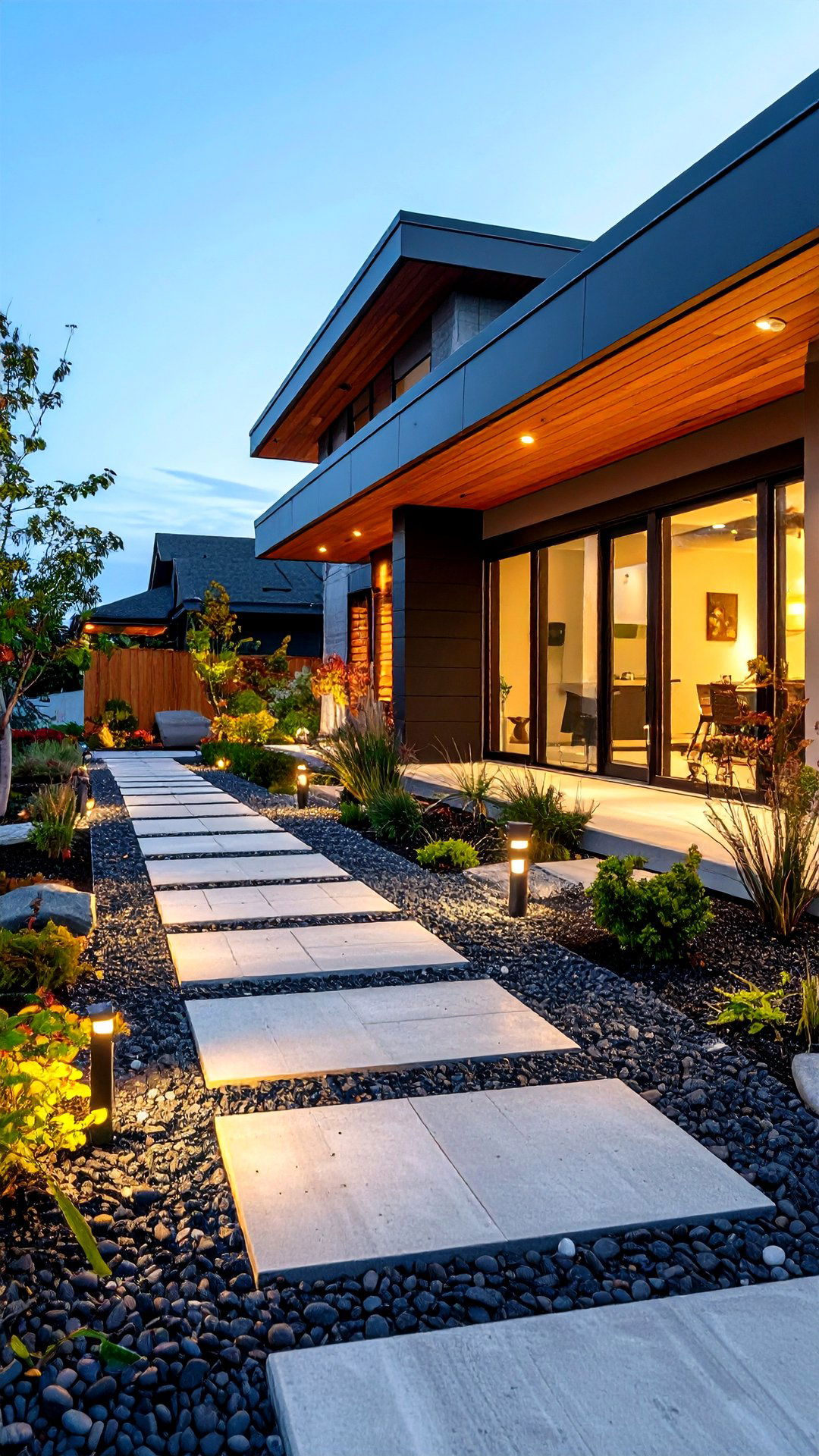
Replacing cracked flagstones with a geometric concrete-paver walkway adds order to a wandering 1980s house exterior. Choose large 24-inch square slabs laid in a running-bond pattern offset by two-inch strips of black Mexican beach pebbles. The repeating square motif echoes eighties digital pixel grids, while the dark stone joints drain rainwater rapidly. Maintain a level sub-base of compacted gravel and sand so the path stays smooth for roller skates and strollers alike. Finish with solar stake lights tucked within the pebble gaps, casting soft pools that illuminate those crisp right angles after dusk.
21. Solar Panel Array Complements a 1980s House Exterior
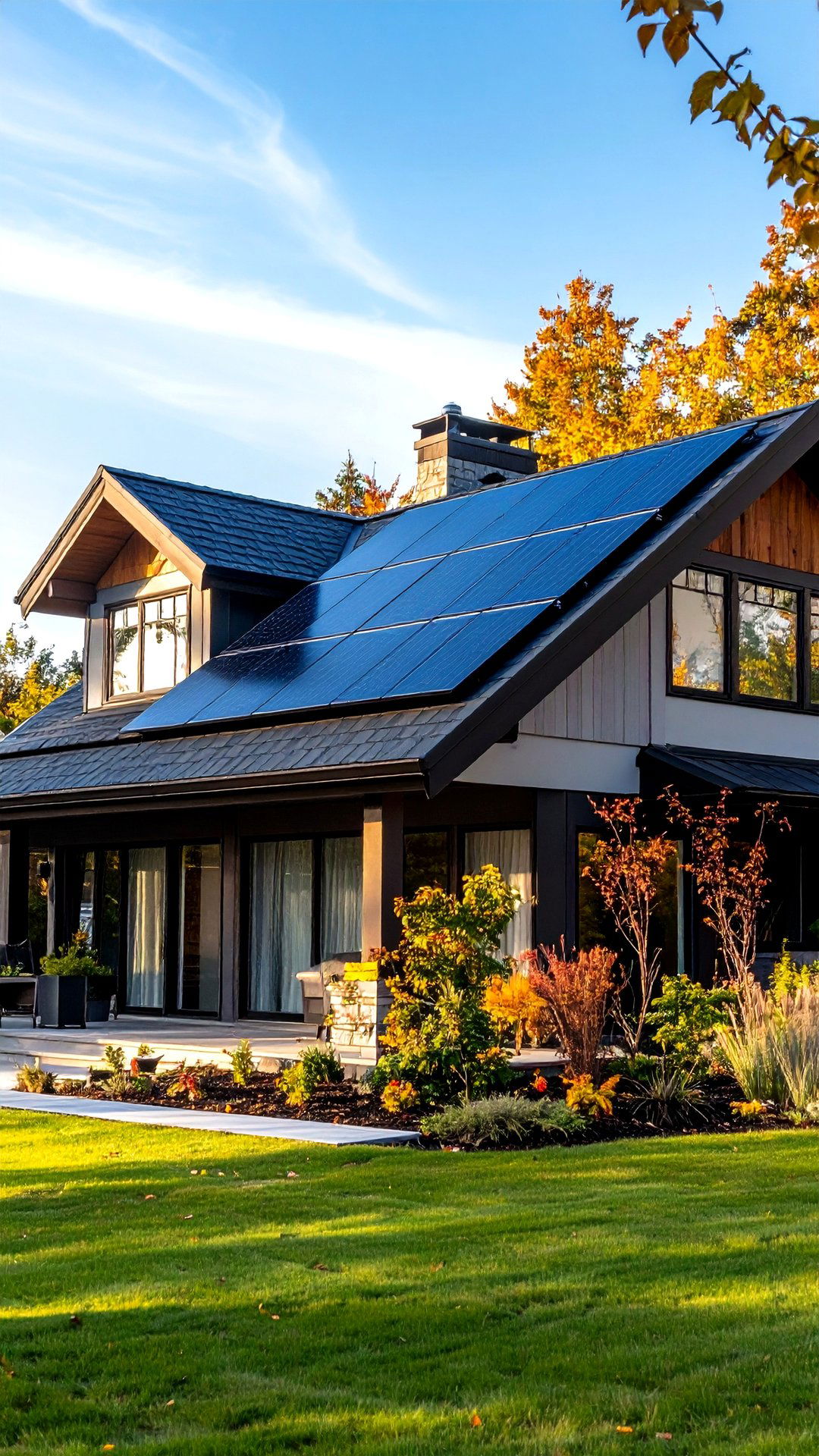
Installing sleek black PV panels atop the broad roof planes fuses eco-minded living with a 1980s house exterior’s futurist roots. Most split-level and shed-roof homes from the era have generous southern exposures perfect for 8-kW arrays that offset annual utility bills. Low-profile rail mounts keep modules close to shingles, preserving crisp rooflines, while micro-inverters simplify wiring. Coordinate panel frames with standing-seam metal or asphalt shingles to minimize contrast. A free monitoring app displays real-time production, giving the home a technological dashboard reminiscent of eighties arcade leaderboards — only this time the high score saves real money and emissions.
22. Mini Atrium Entry Refreshes a 1980s House Exterior

Reimagining the front stoop as a mini atrium lends California-cool attitude to a 1980s house exterior. Demolish a cramped concrete pad and frame a recessed planter bordered by low powder-coated steel retaining walls. Fill with river pebbles, a single sculptural yucca, and color-blocked ceramic cubes that double as seating. Overhead, hang an open-grid pergola painted crisp white so dappled light plays across the entry throughout the day. The indoor-outdoor threshold revives the era’s fascination with atriums found in malls and office lobbies, but scales it to residential life, offering a welcoming pocket of greenery and shade before guests even ring the bell.
23. Angled Aluminum Awnings Cool a 1980s House Exterior
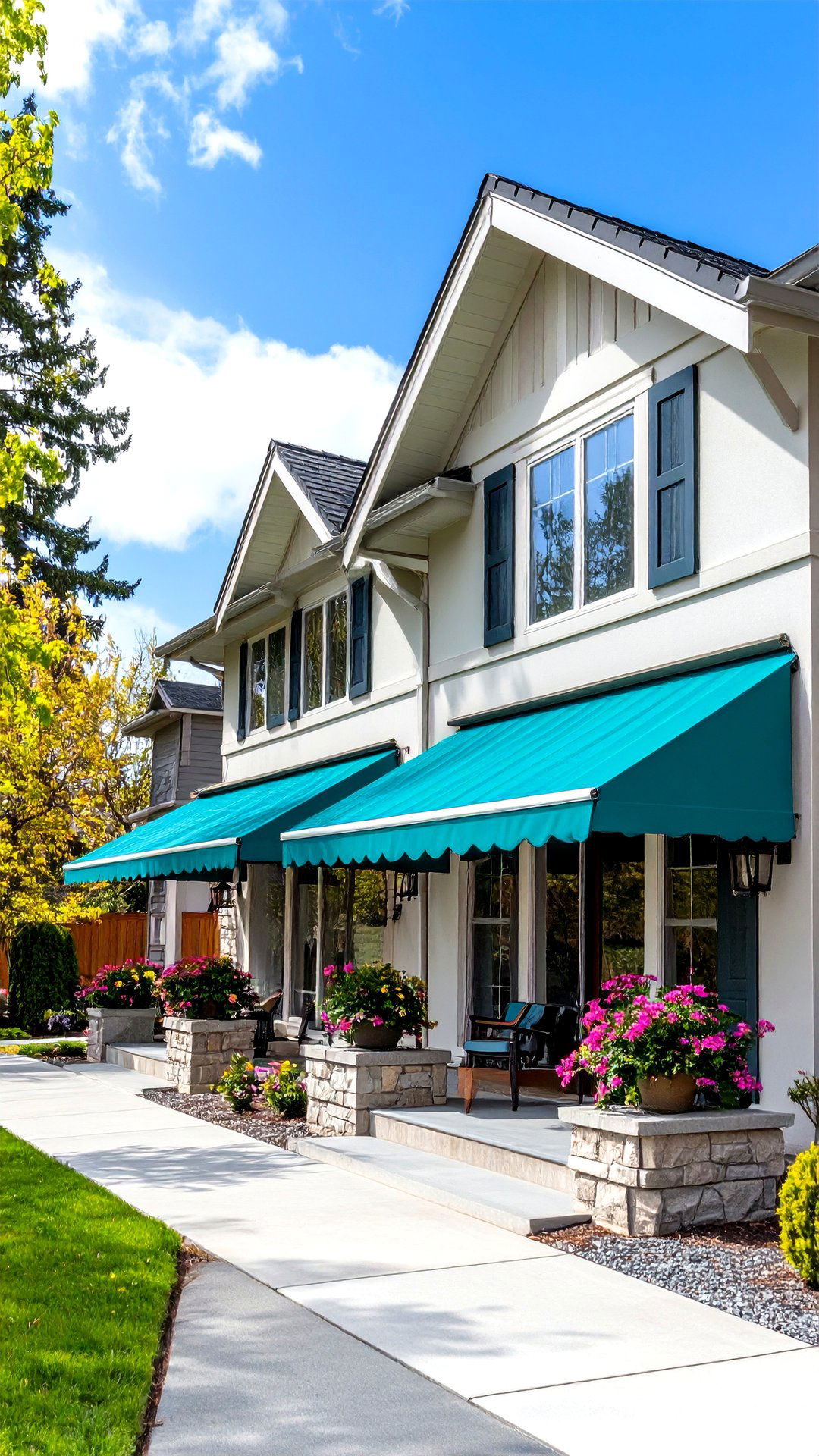
Fitting angled aluminum window awnings revives an iconic sun-control detail on a 1980s house exterior. Powder-coat the slatted blades in teal, mauve, or graphite to echo popular appliance colors from the decade, and tilt them at 30 degrees to block midsummer glare while admitting winter rays. Because the extrusions mount on cleats, they leave brick or siding intact and can be removed for painting. Inside, rooms stay cooler without drawn curtains, reducing HVAC loads. Outside, the crisp fins add depth and rhythmic shadow, giving flat façades a subtle kinetic quality whenever afternoon light sweeps across them.
24. Monochrome Charcoal Paint Unifies a 1980s House Exterior
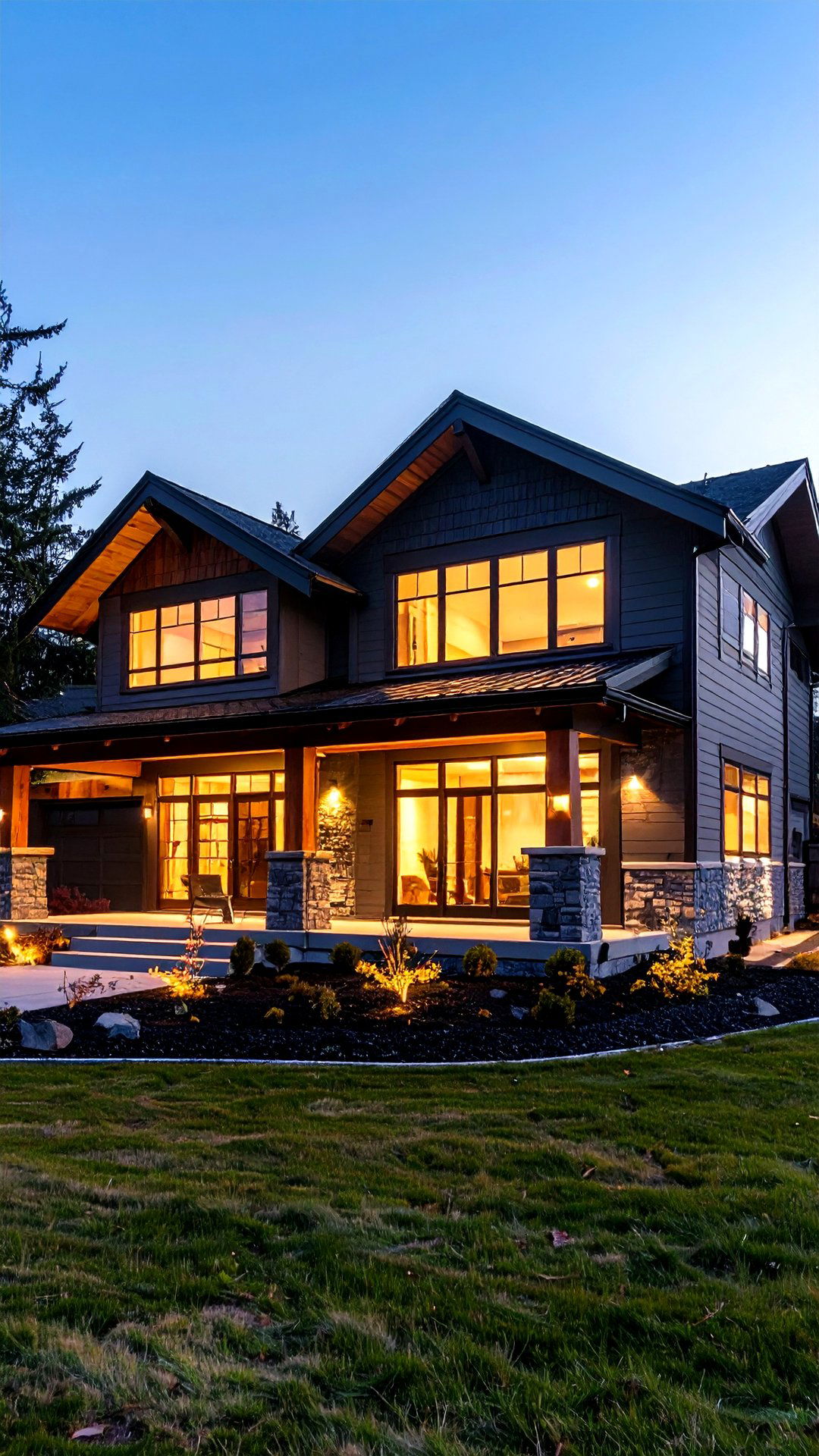
Painting the entire 1980s house exterior in a single deep charcoal unifies disparate additions and instantly feels sophisticated. Dark envelopes blur gutters, vents, and mismatched materials, letting the building’s volumes, not its seams, take precedence. Choose a high-quality mineral-based coating rated for extreme UV to prevent chalking; two coats by sprayer ensure consistent sheen. Accentuate windows with narrow cedar trim left natural for subtle contrast, and swap brass lanterns for black satin sconces so fixtures disappear by day. At dusk, warm interior lighting glows against the dark shell, highlighting the home’s original geometry like an art piece on a pedestal.
25. Sculptural Rain Chain Highlights a 1980s House Exterior
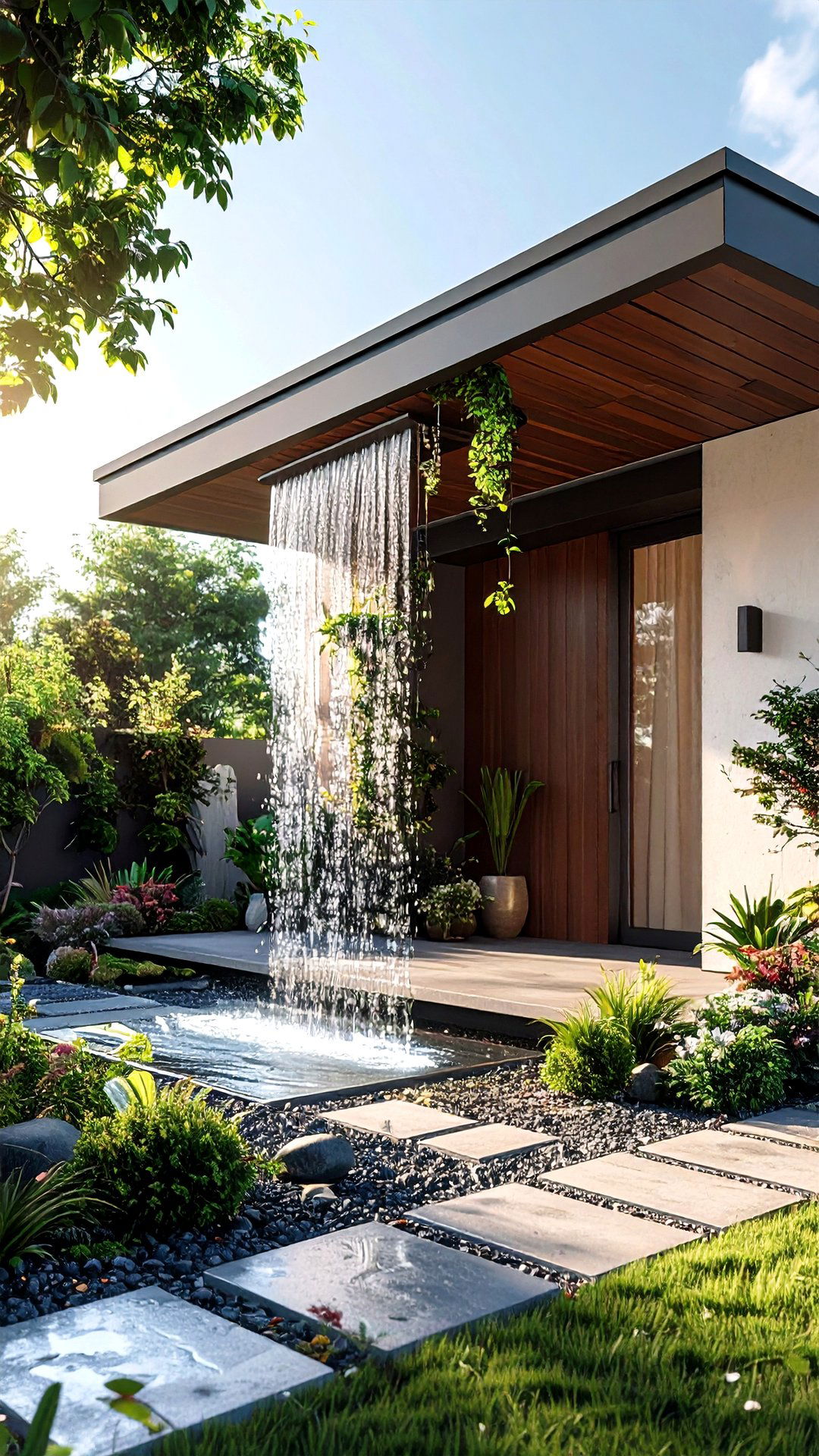
Replacing a plain downspout with a sculptural rain chain finishes a 1980s house exterior with a functional art statement. Opt for interlocking aluminum cubes powder-coated in glossy white so cascading water sparkles like pixels dropping down an arcade screen. Anchor the chain in a ceramic basin filled with polished river stones to control splash and create soothing sound. By rerouting runoff at a prominent corner visible from the street, the chain becomes kinetic décor during storms and a minimalist vertical accent during dry spells. The swap is simple — remove the lower elbow, add a gutter loop, and hook the chain — yet instantly unforgettable.
Conclusion:
Refreshing a 1980s house exterior is less about erasing history and more about amplifying its best ideas — bold geometry, expressive color, and a confident blend of indoor and outdoor living. Whether you choose durable fiber-cement siding, a sunset-stripe fascia, or a dramatic pergola carport, each project layers modern performance onto nostalgic form. Embrace materials that last, lighting that flatters, and design moves that celebrate rather than conceal the era’s optimism. With thoughtful updates, your eighties home can stand out on today’s block — distinctive, energy-smart, and ready for the next chapter.


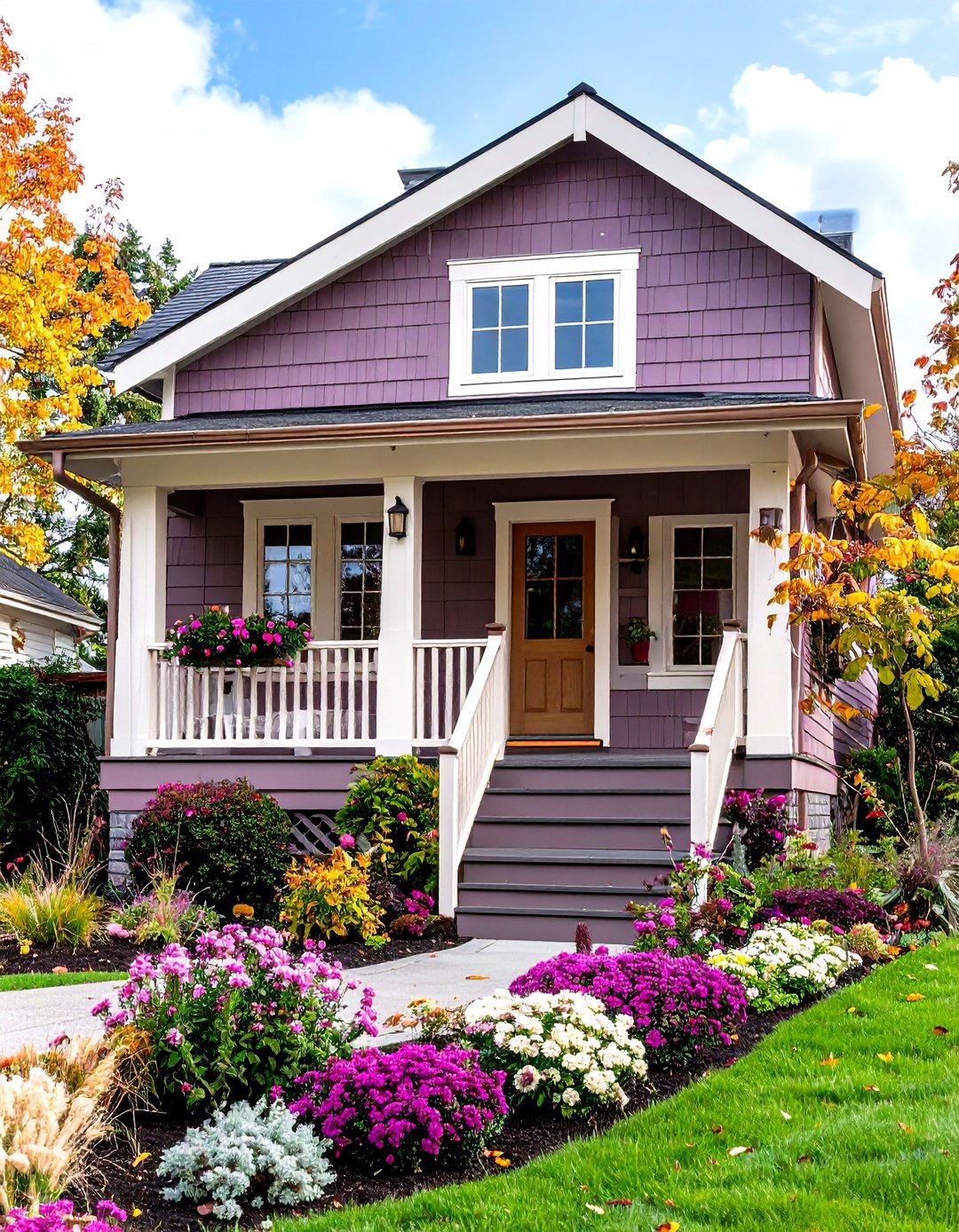


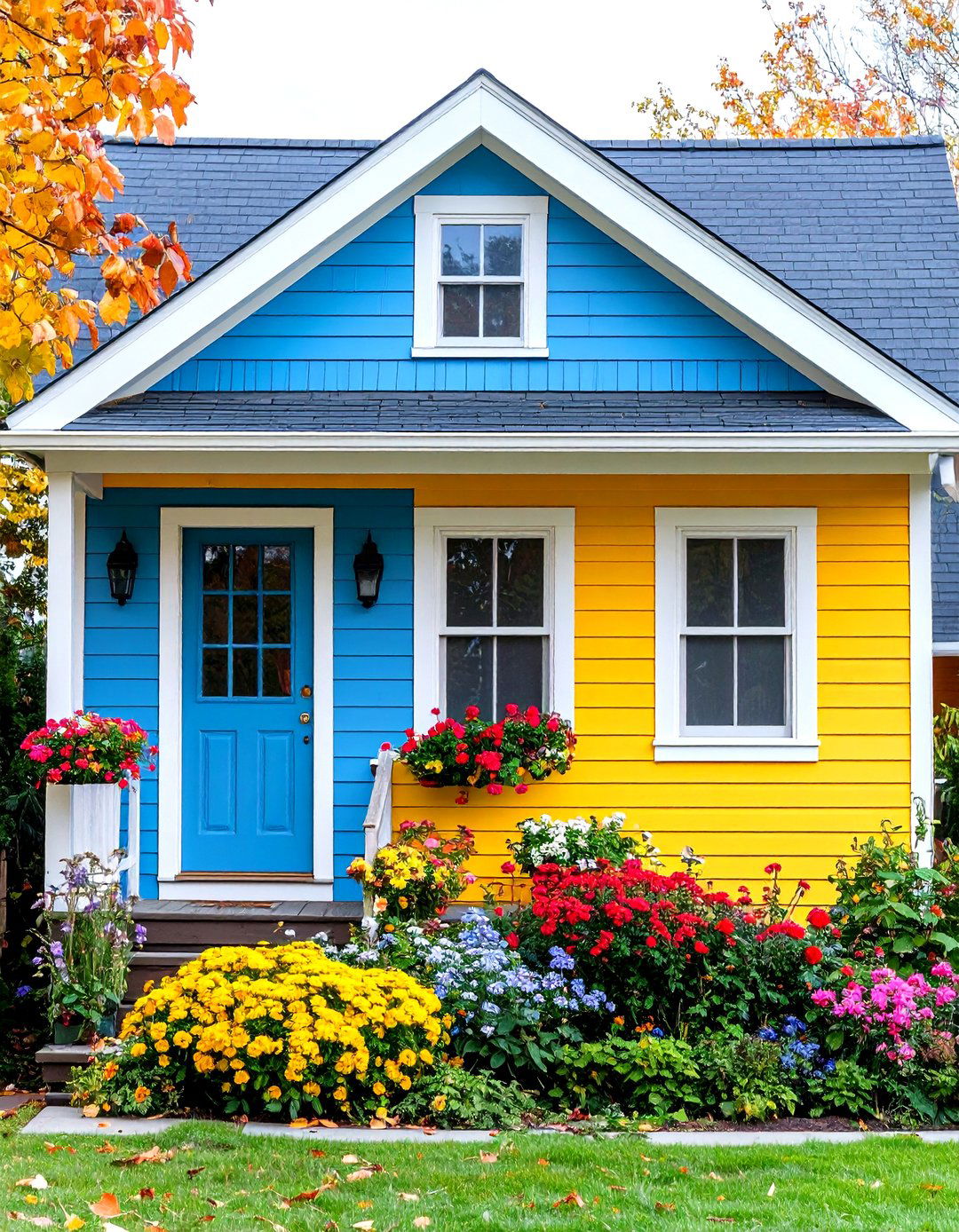
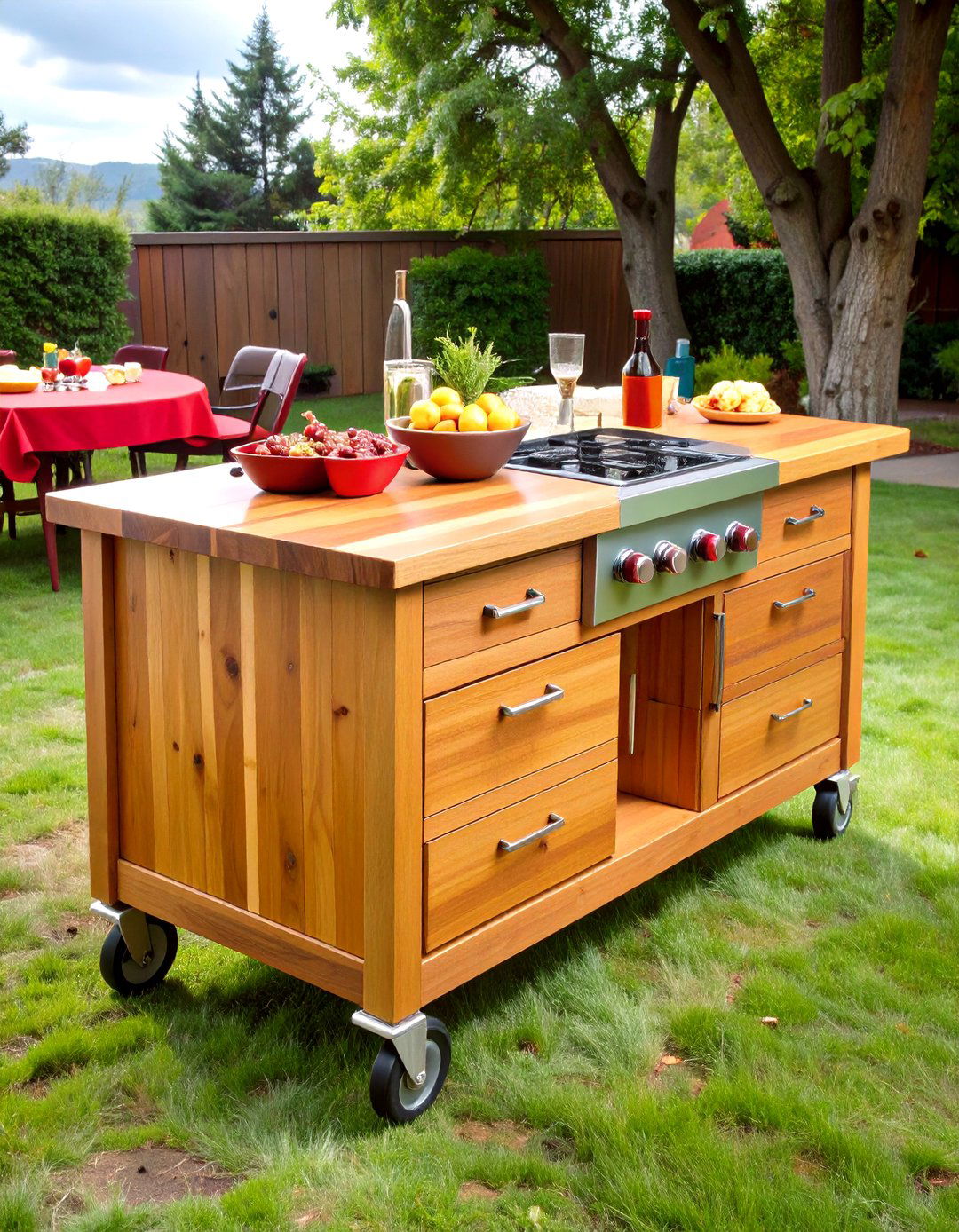
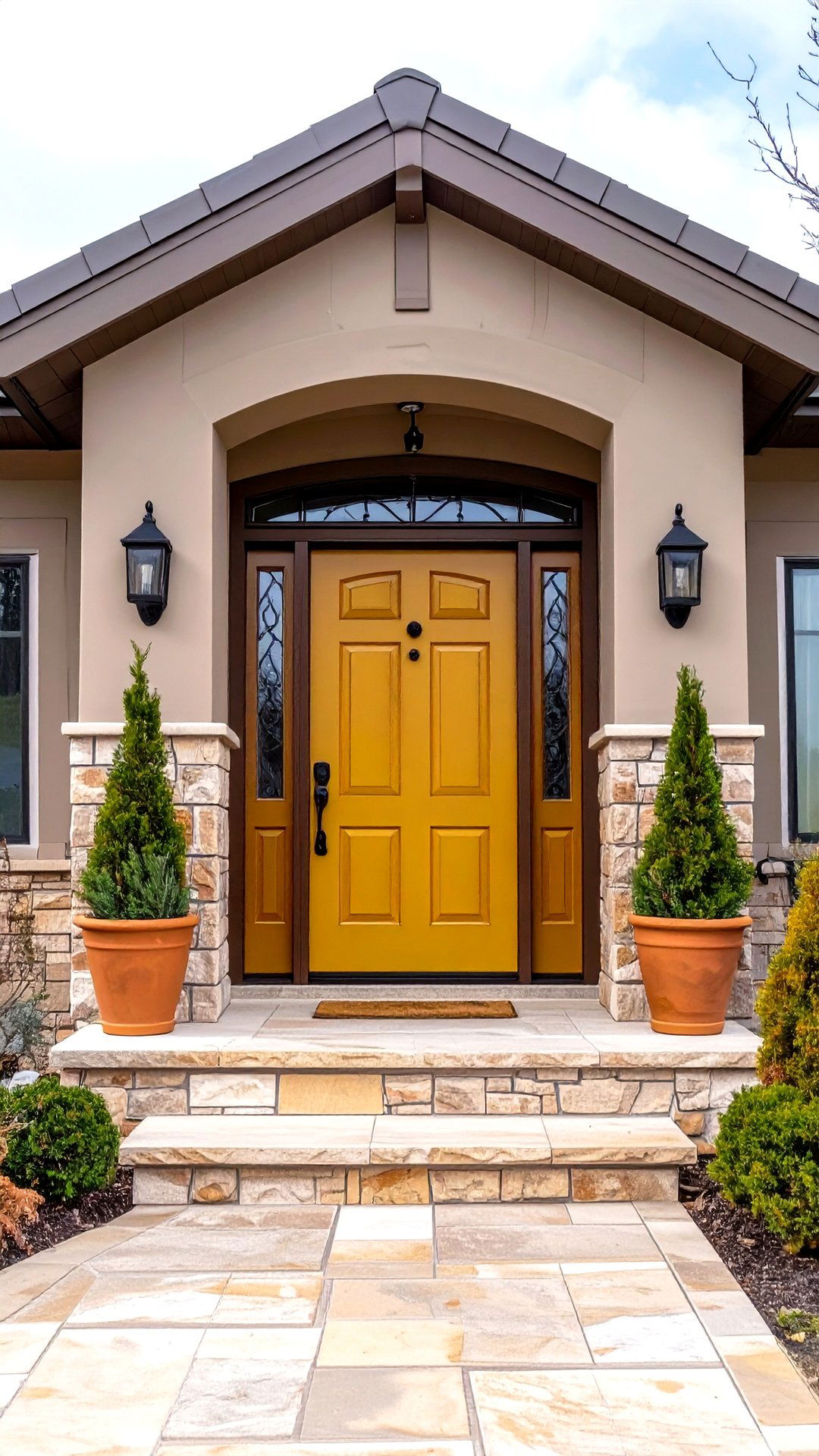

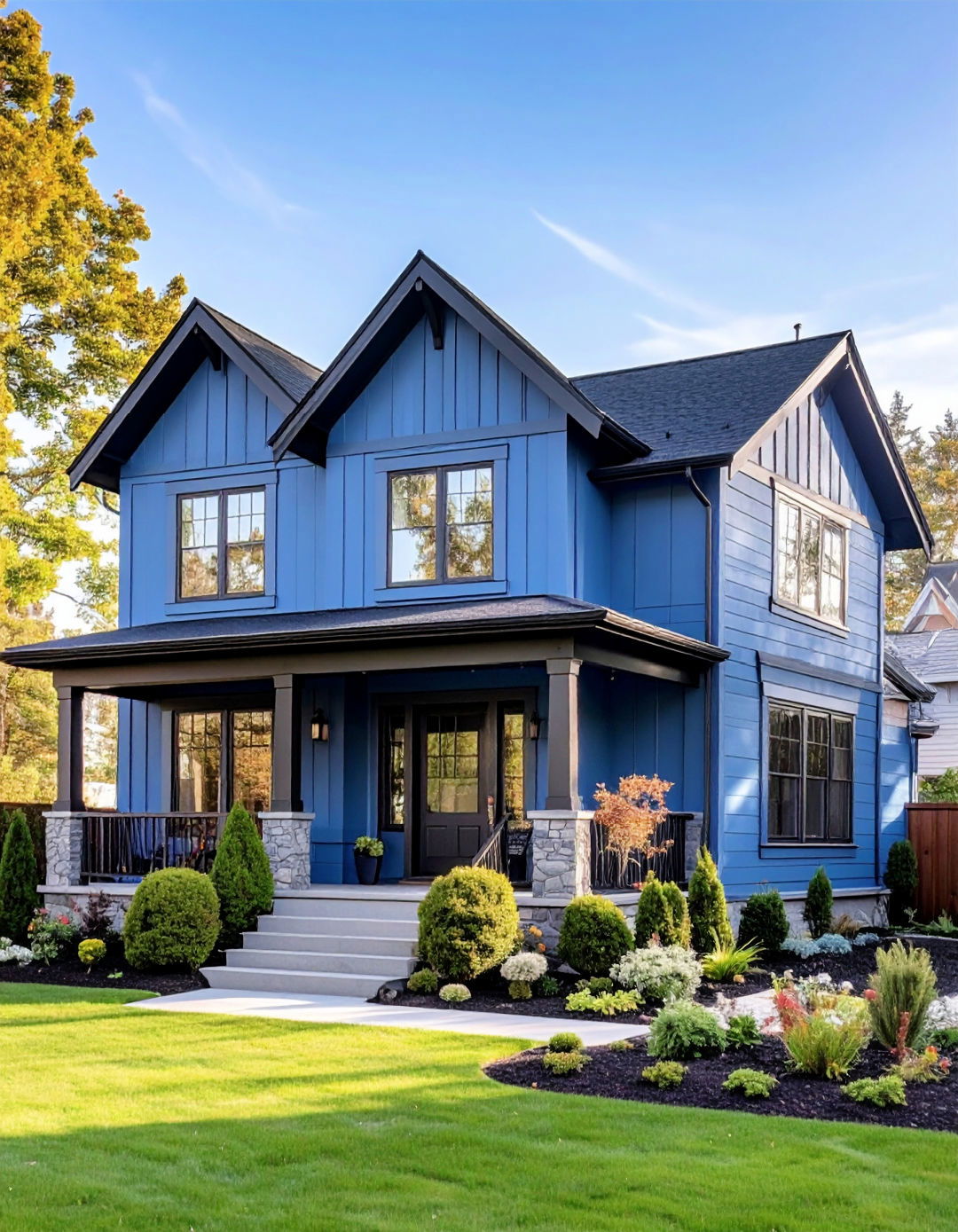
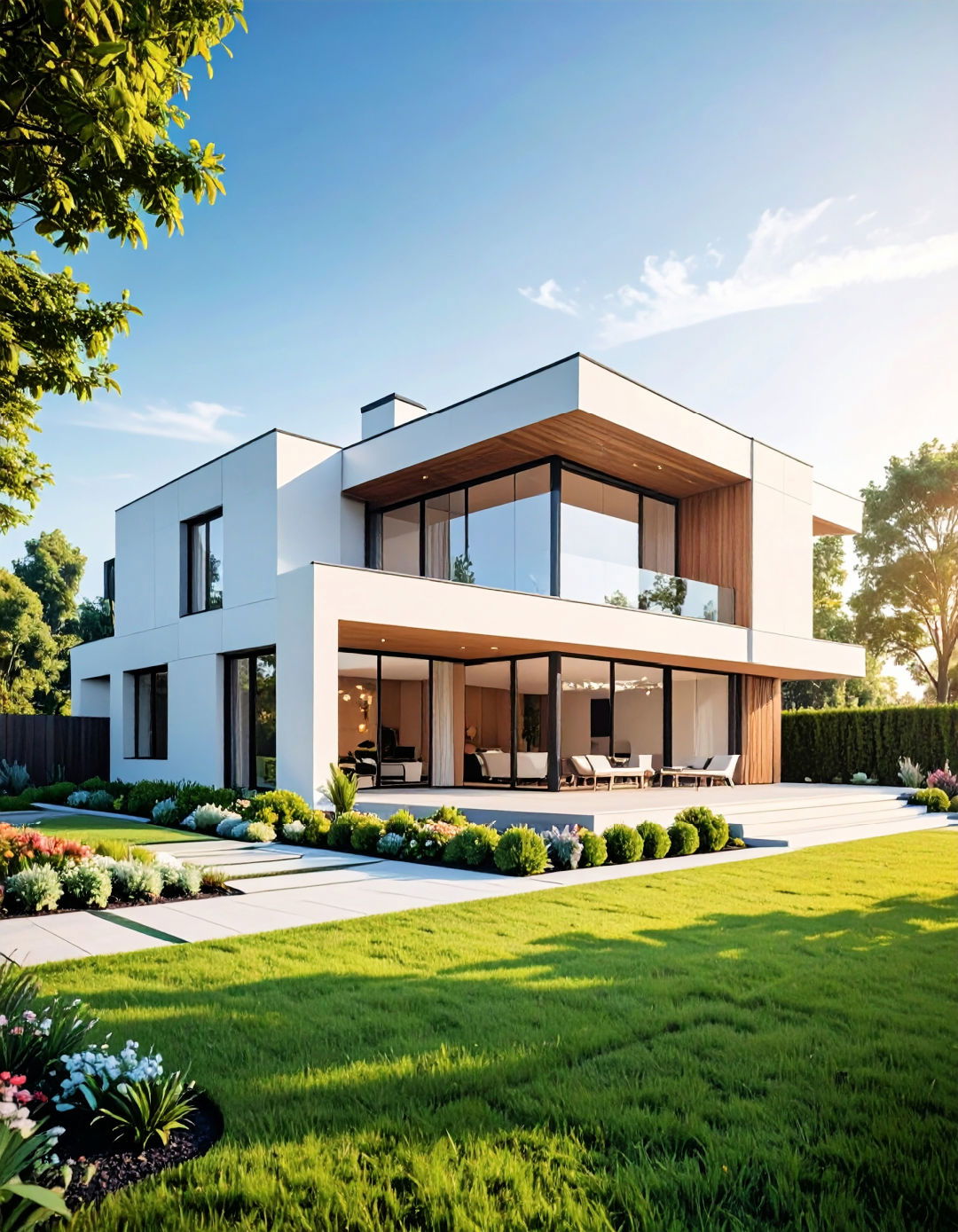

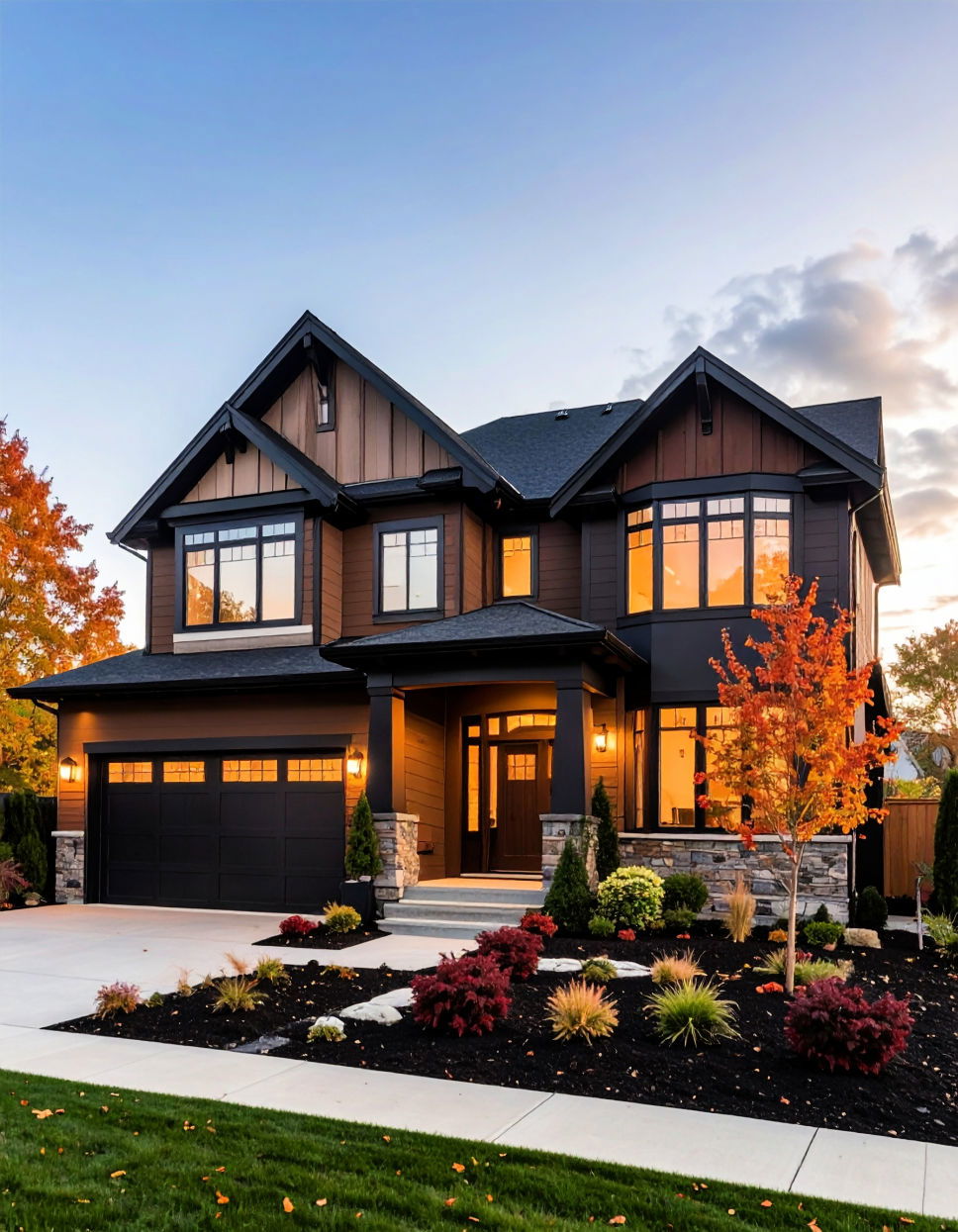
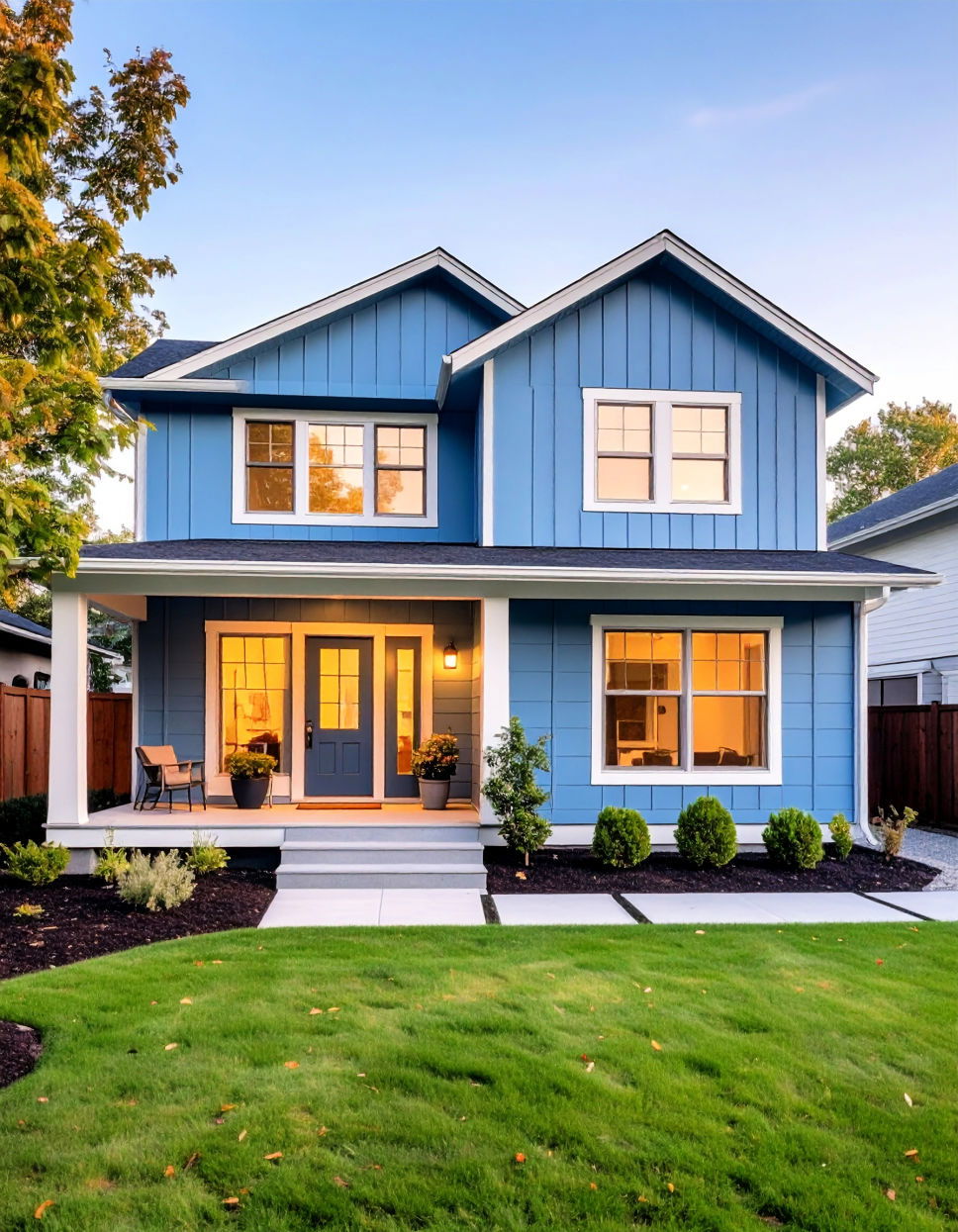

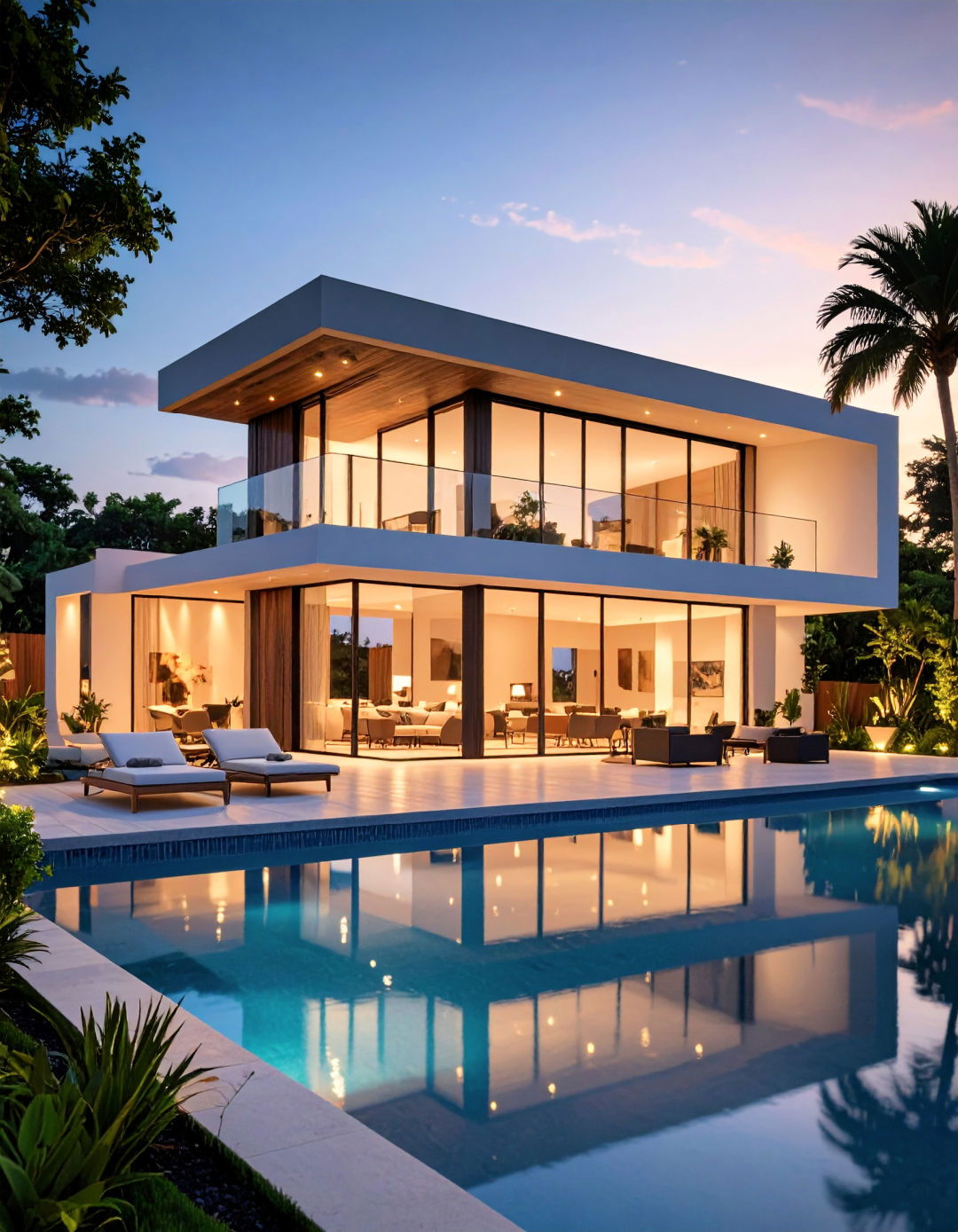
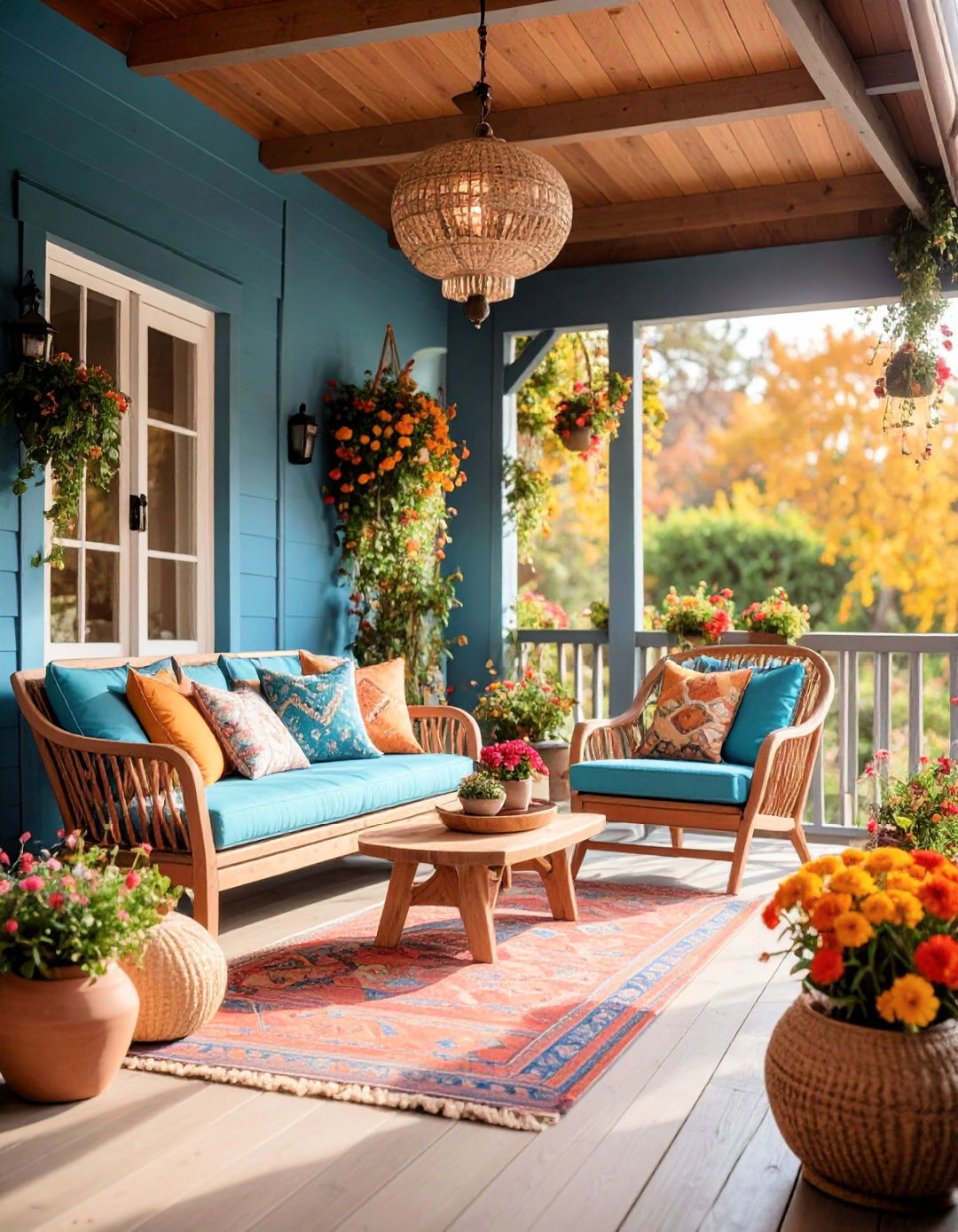
Leave a Reply